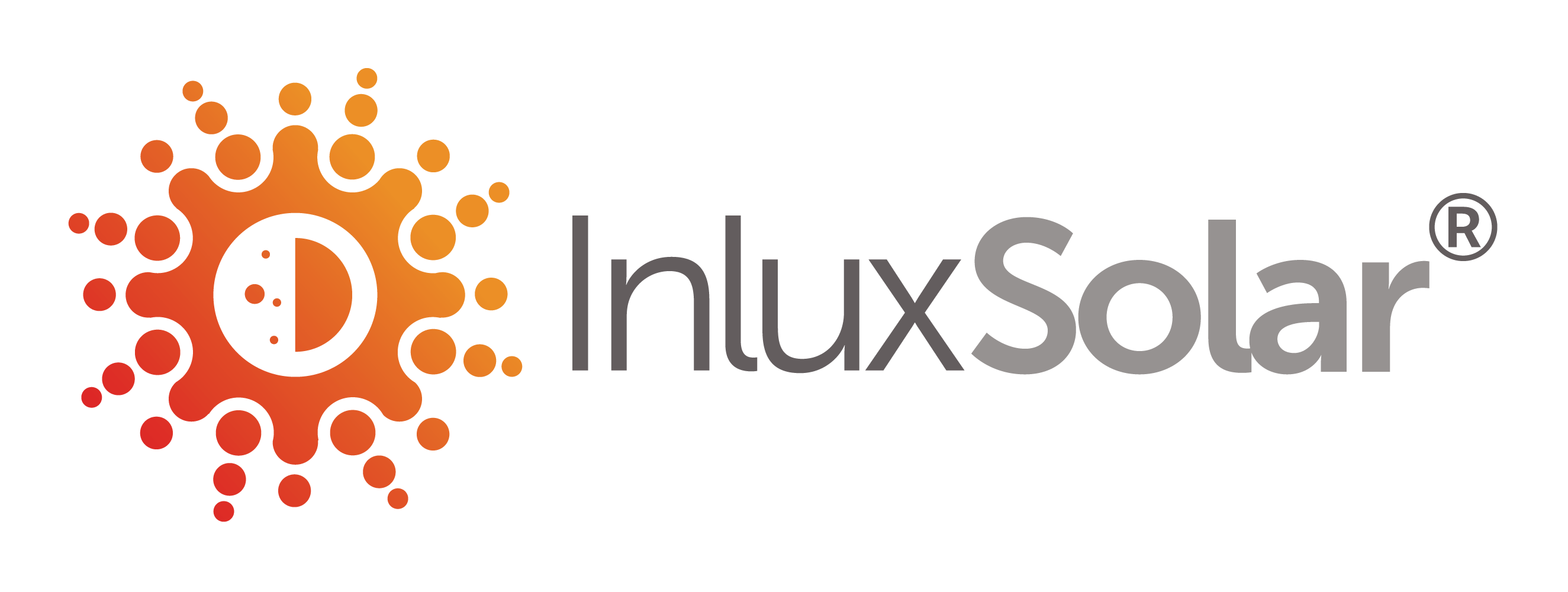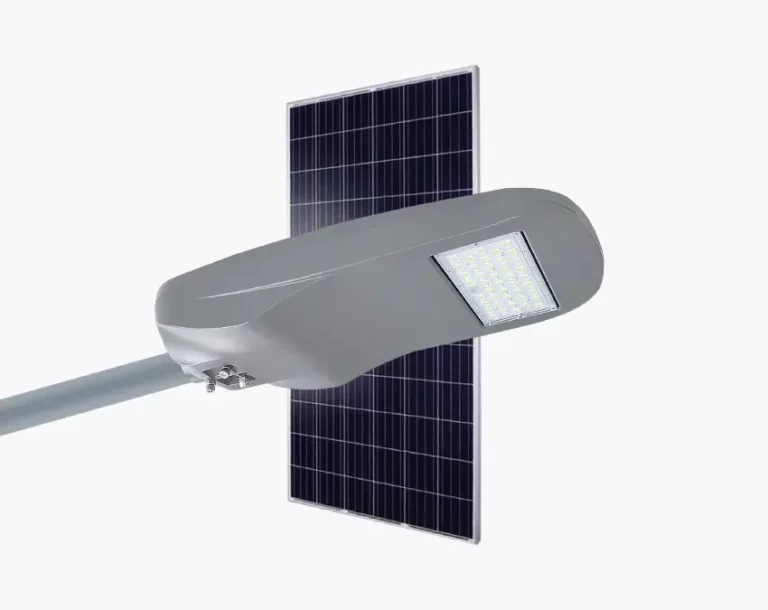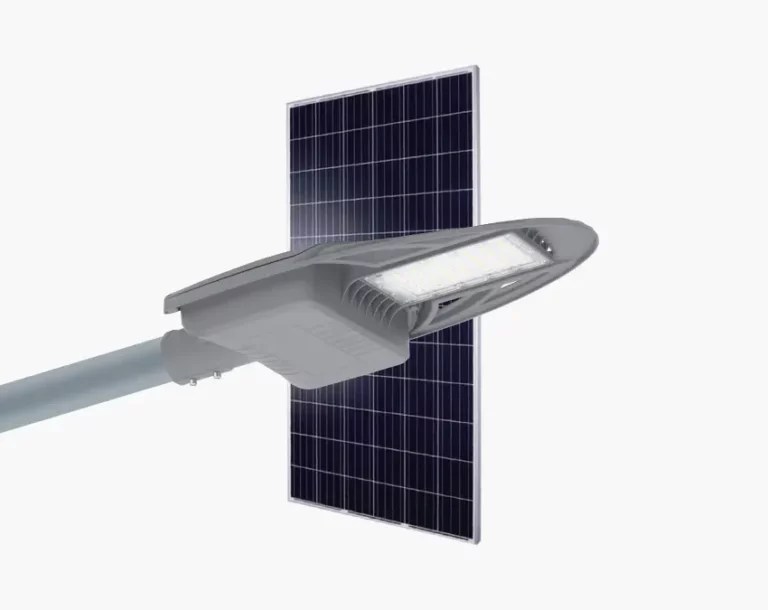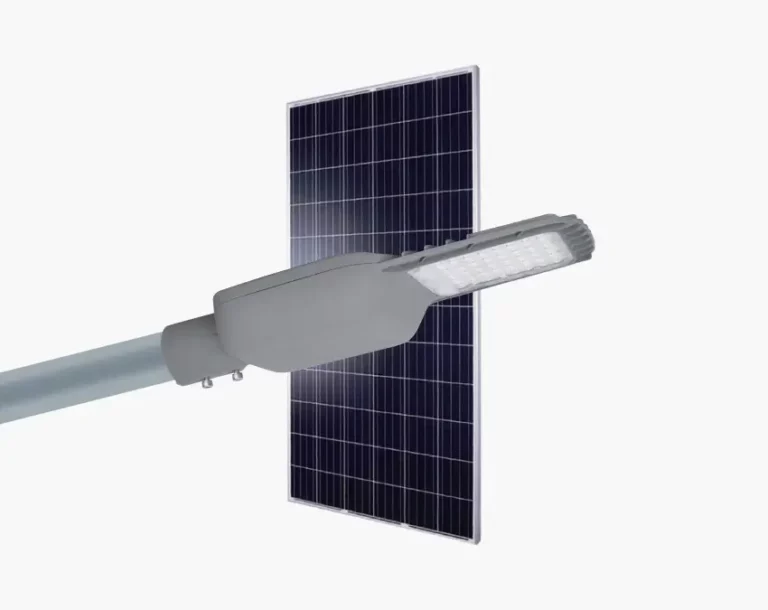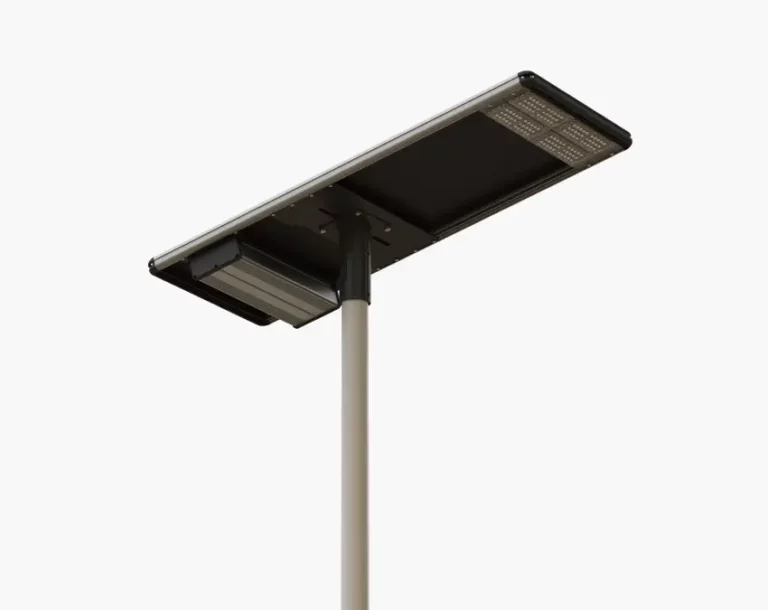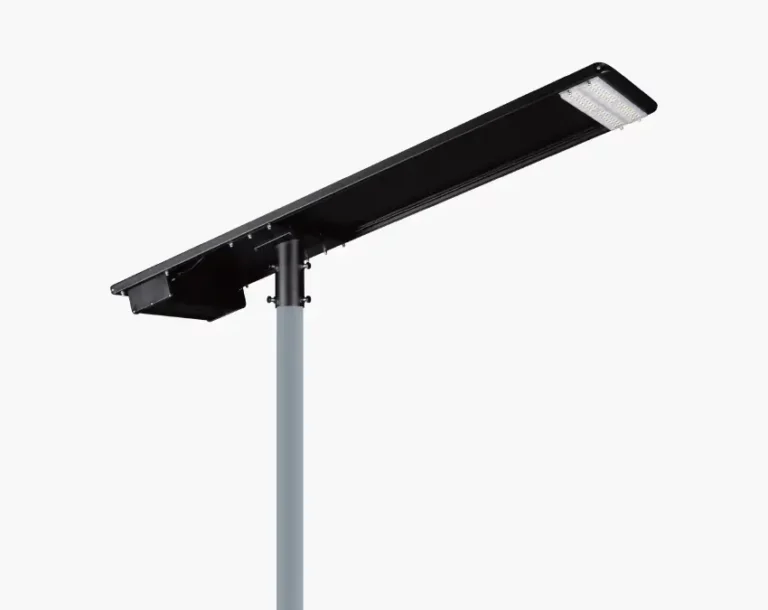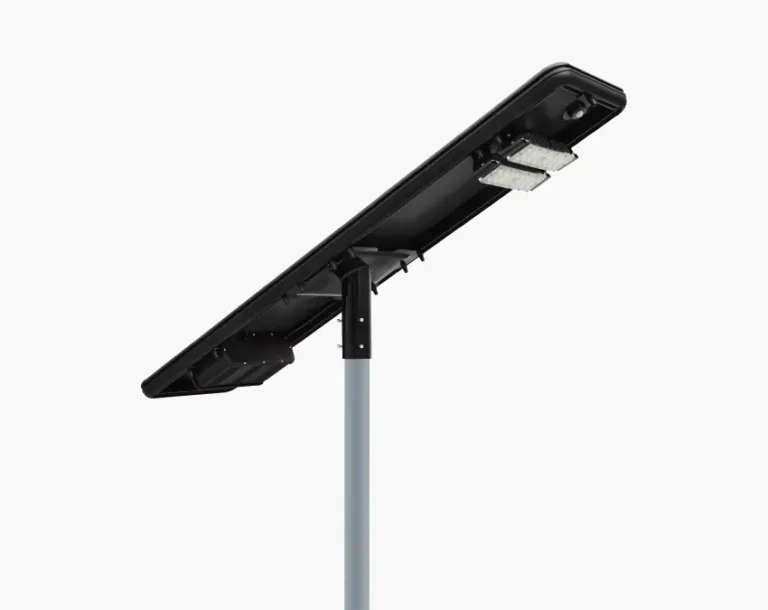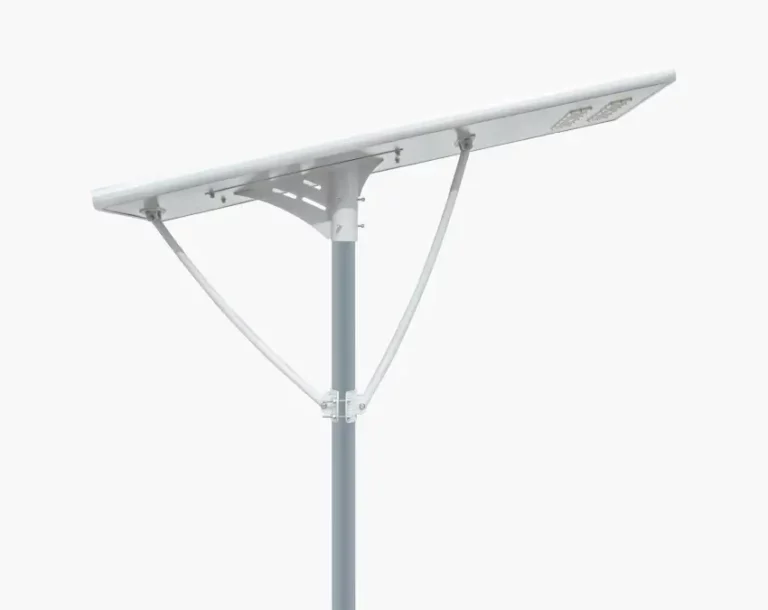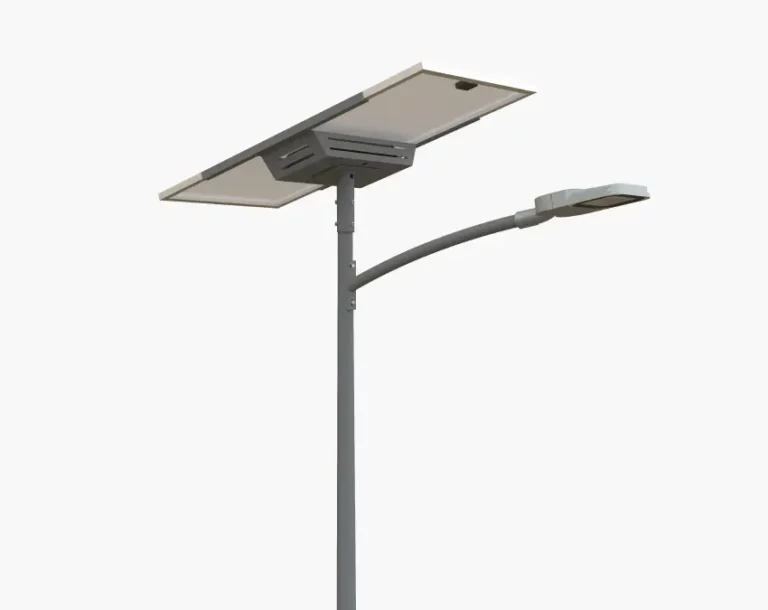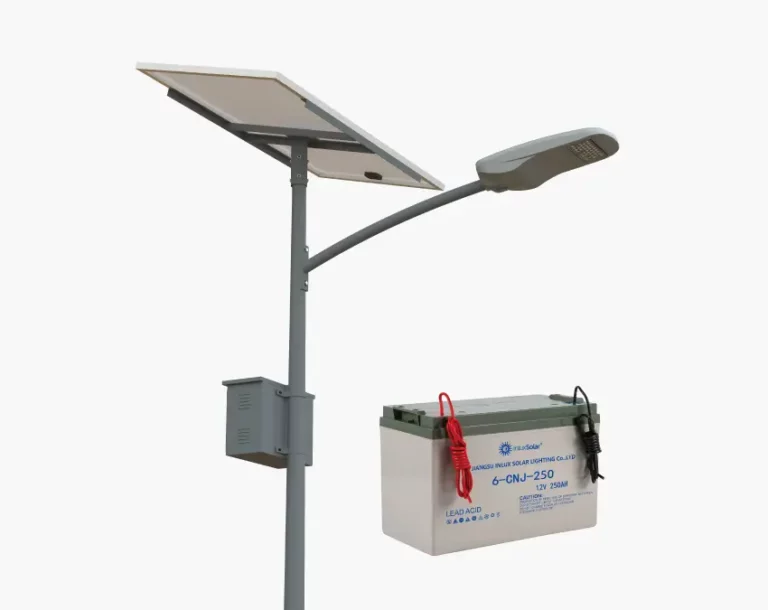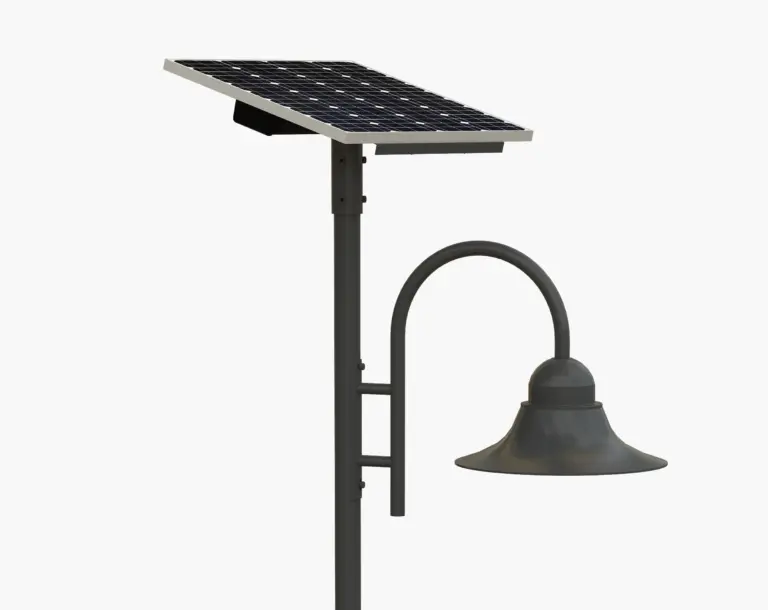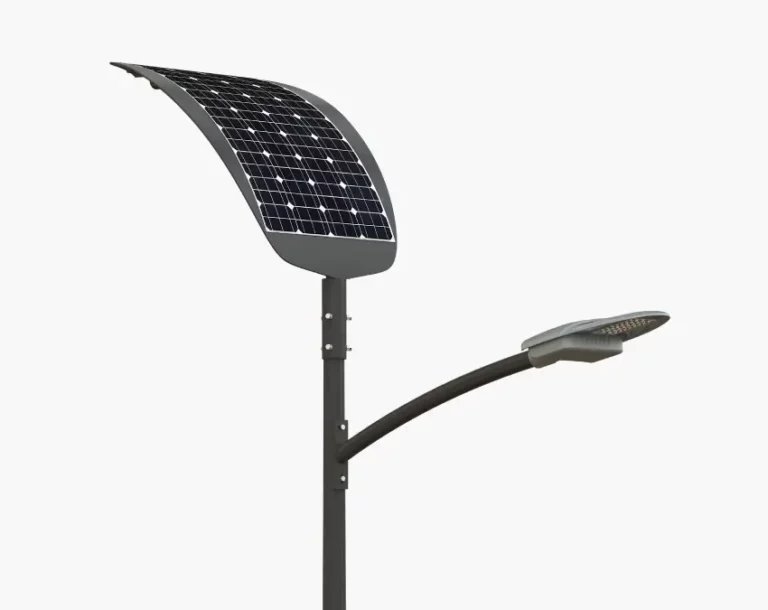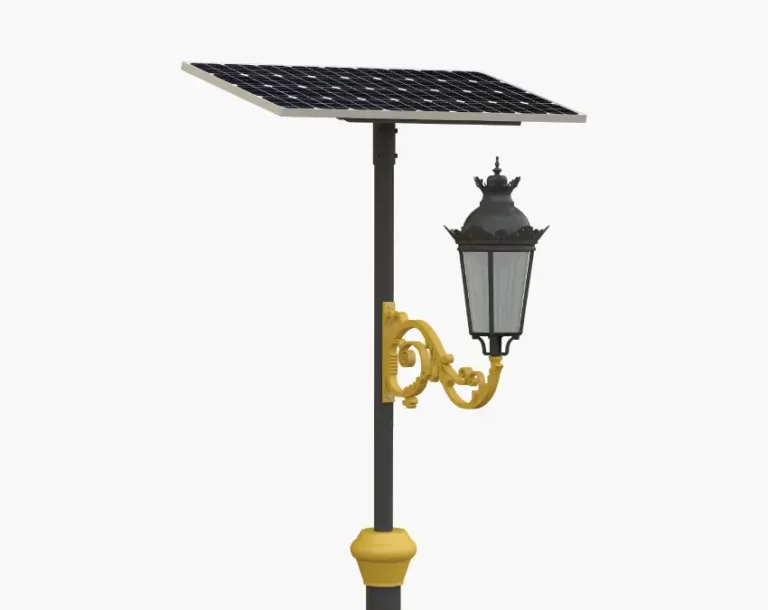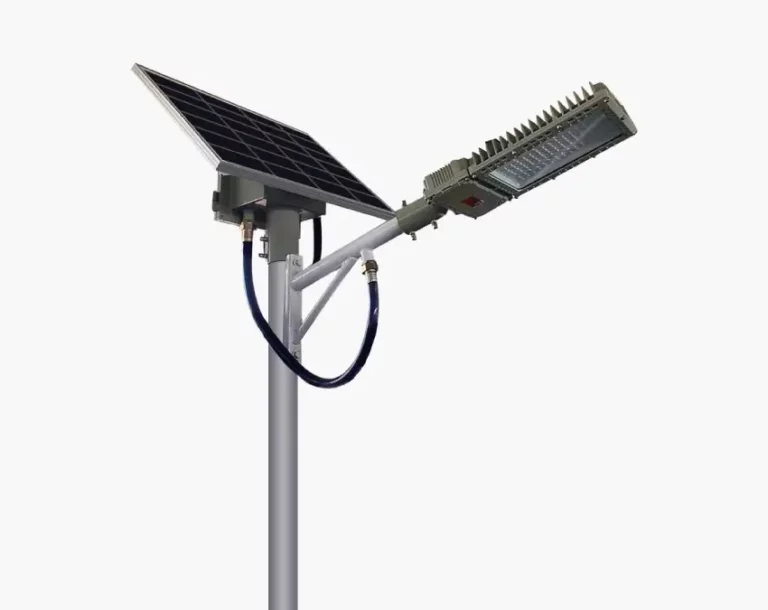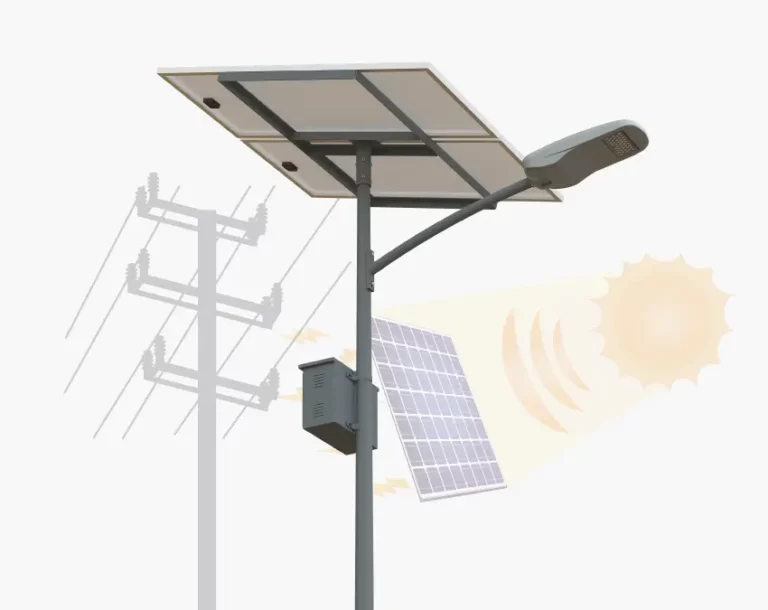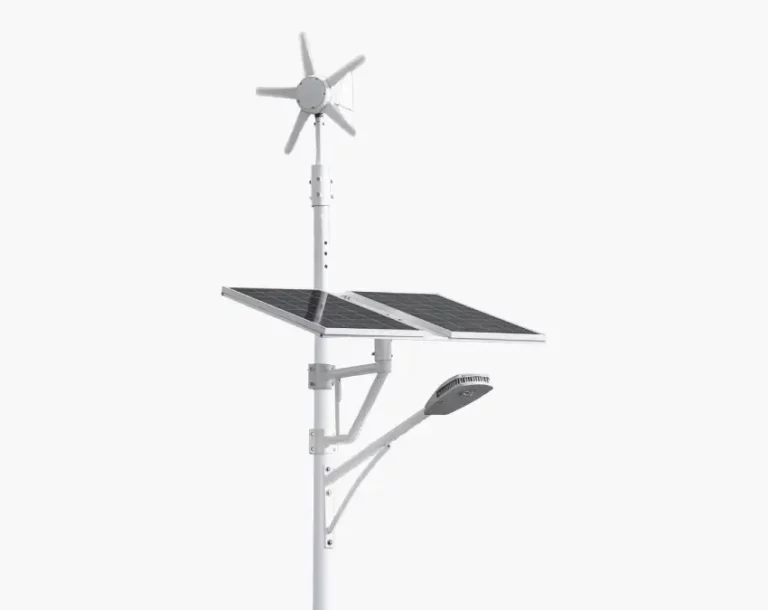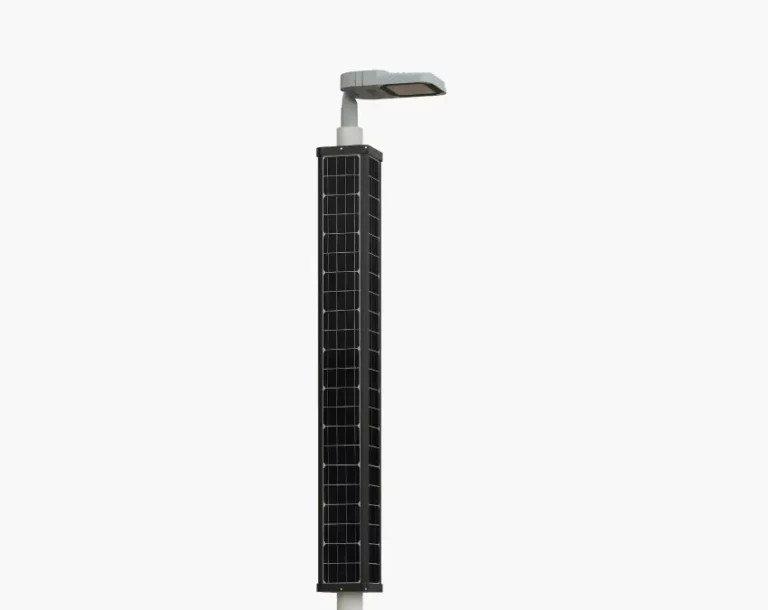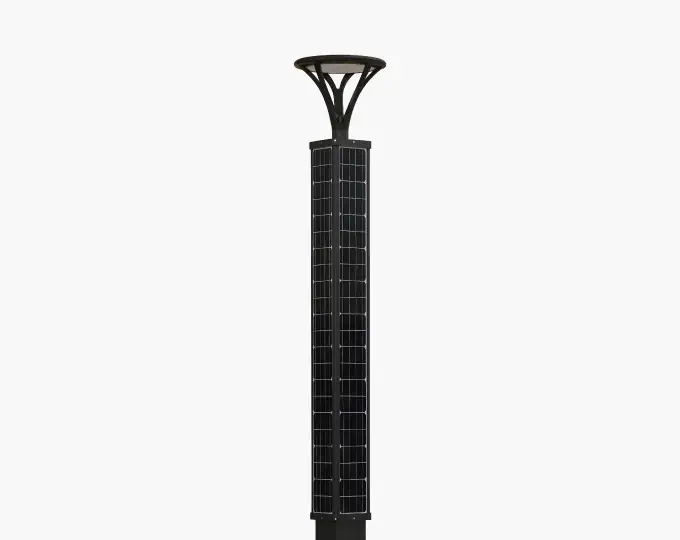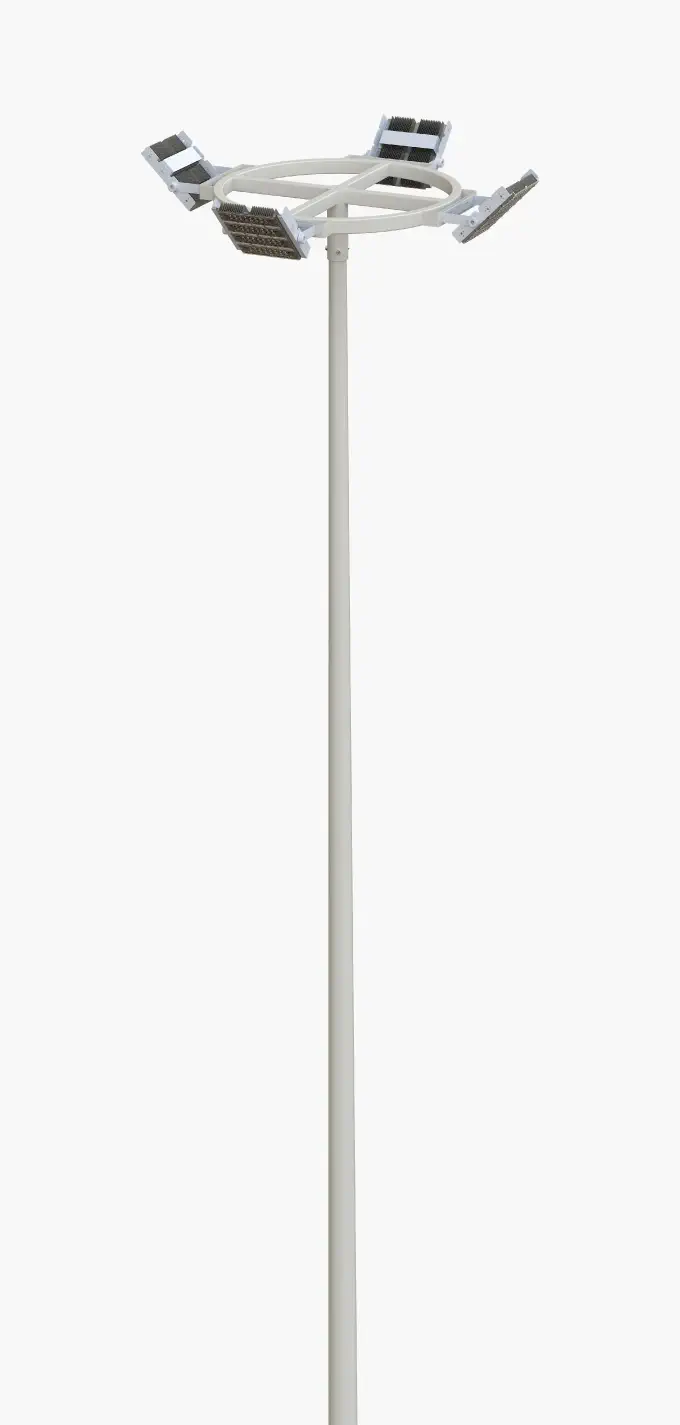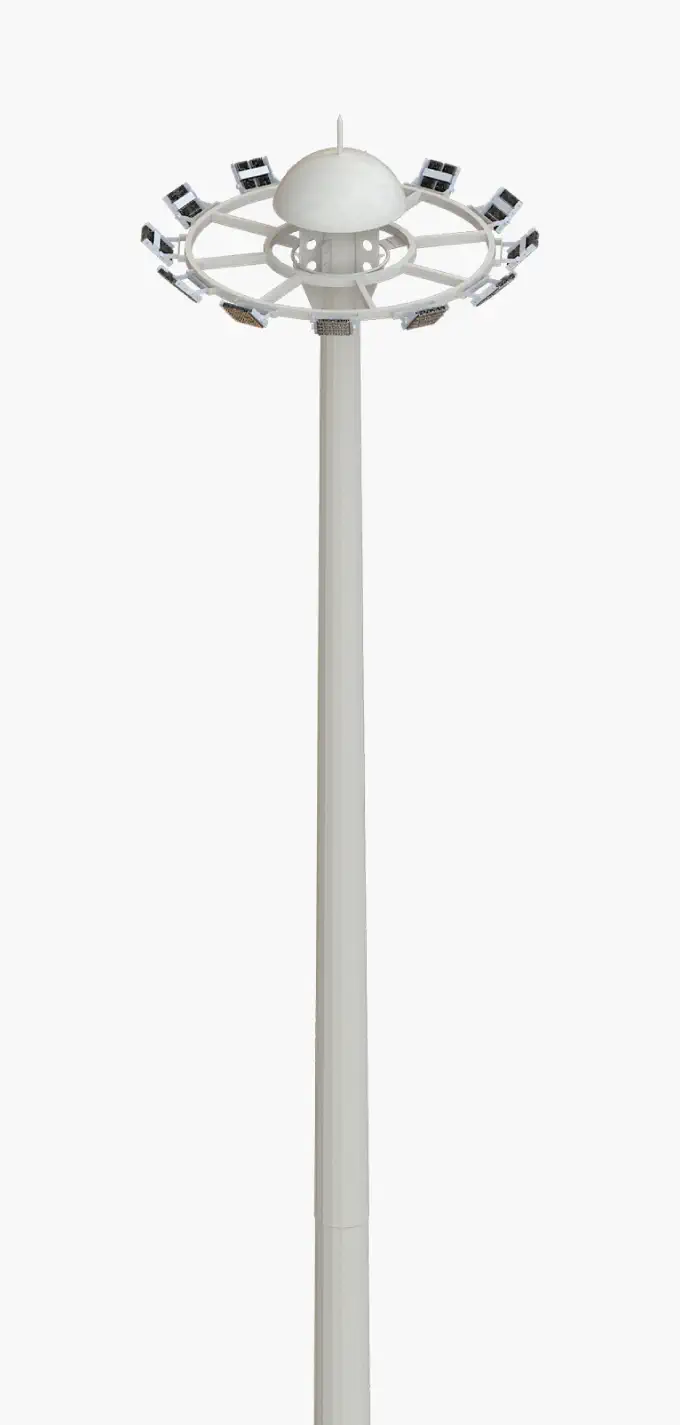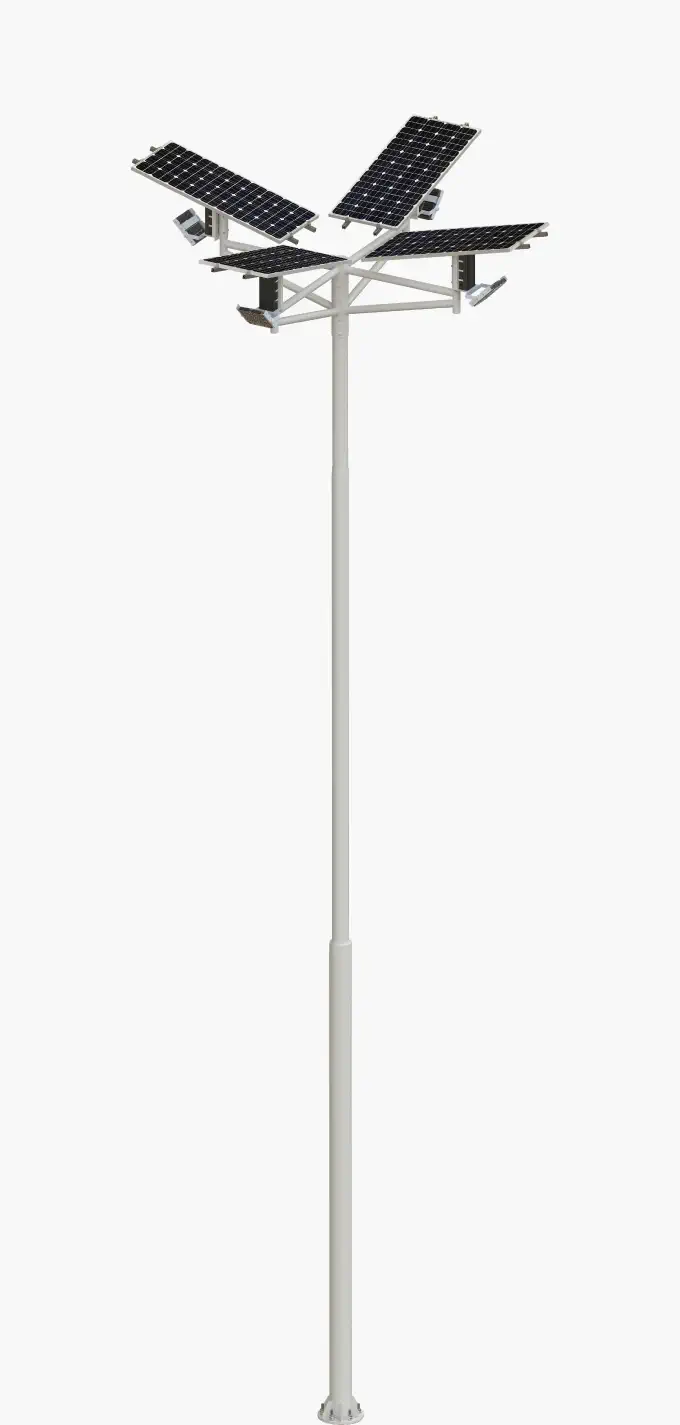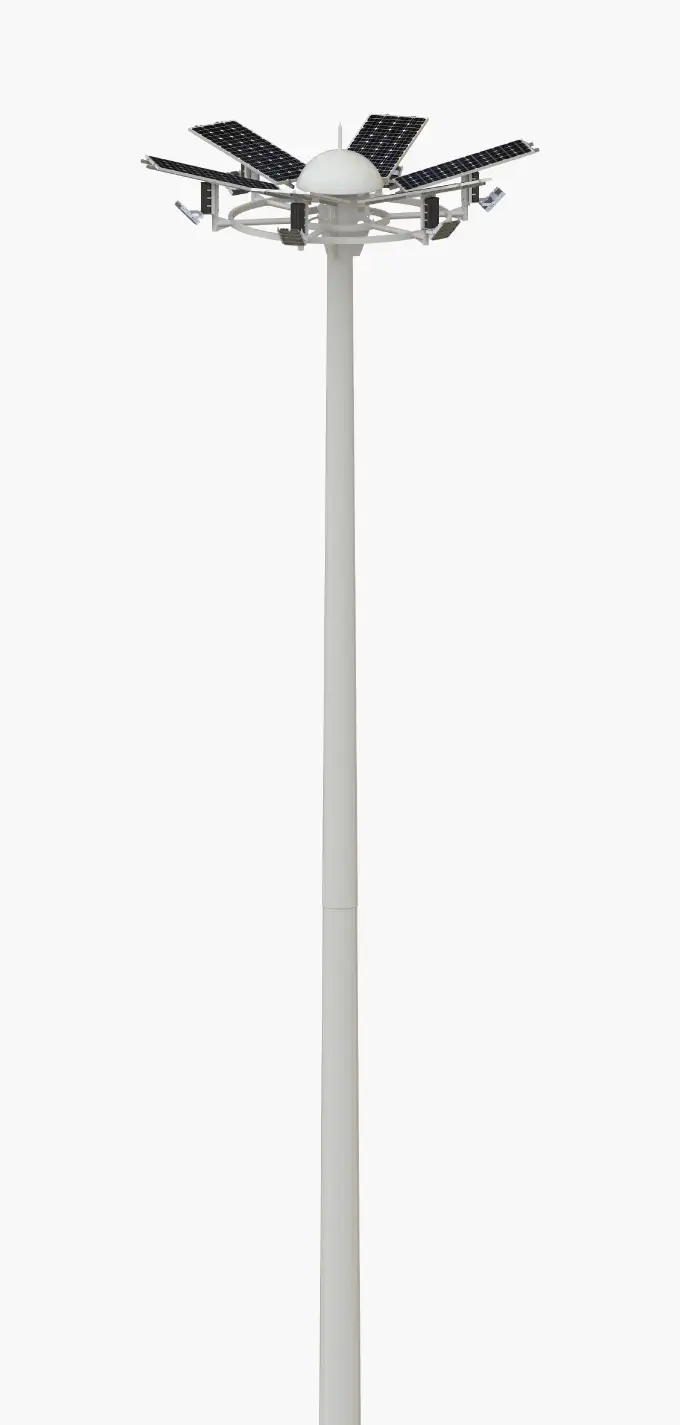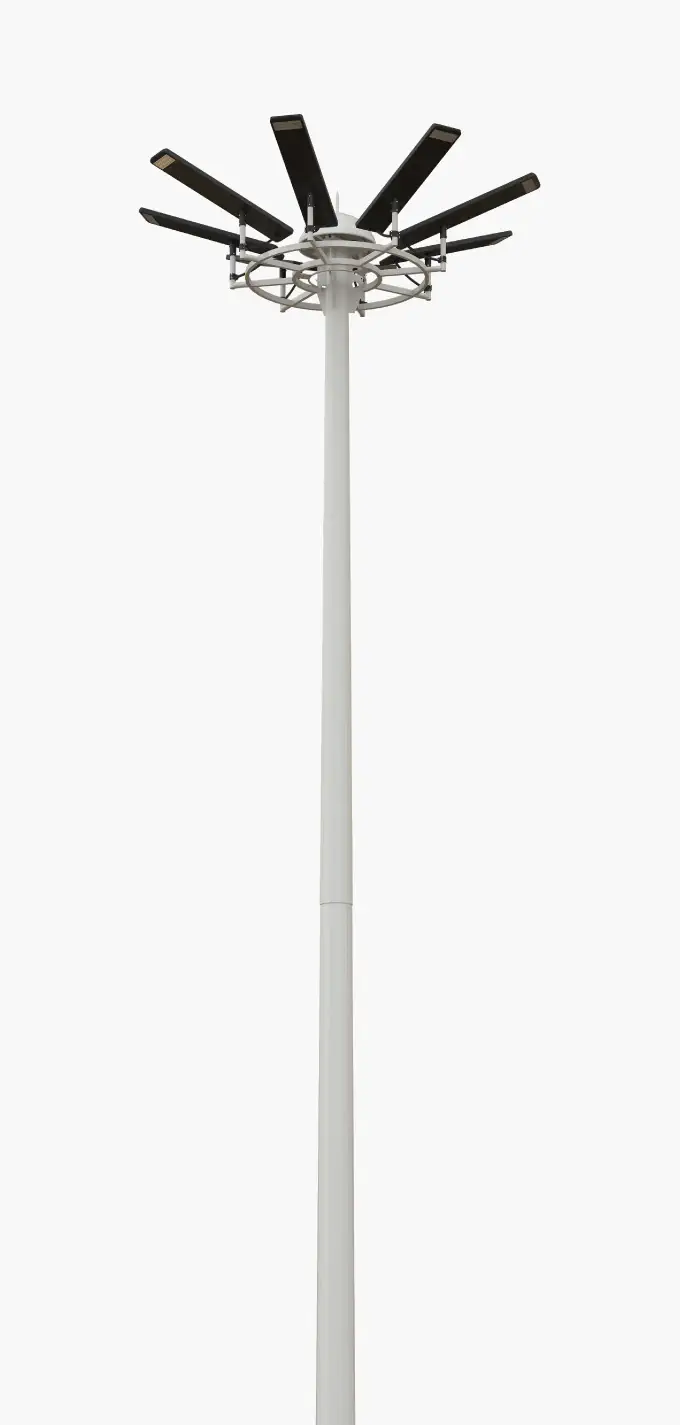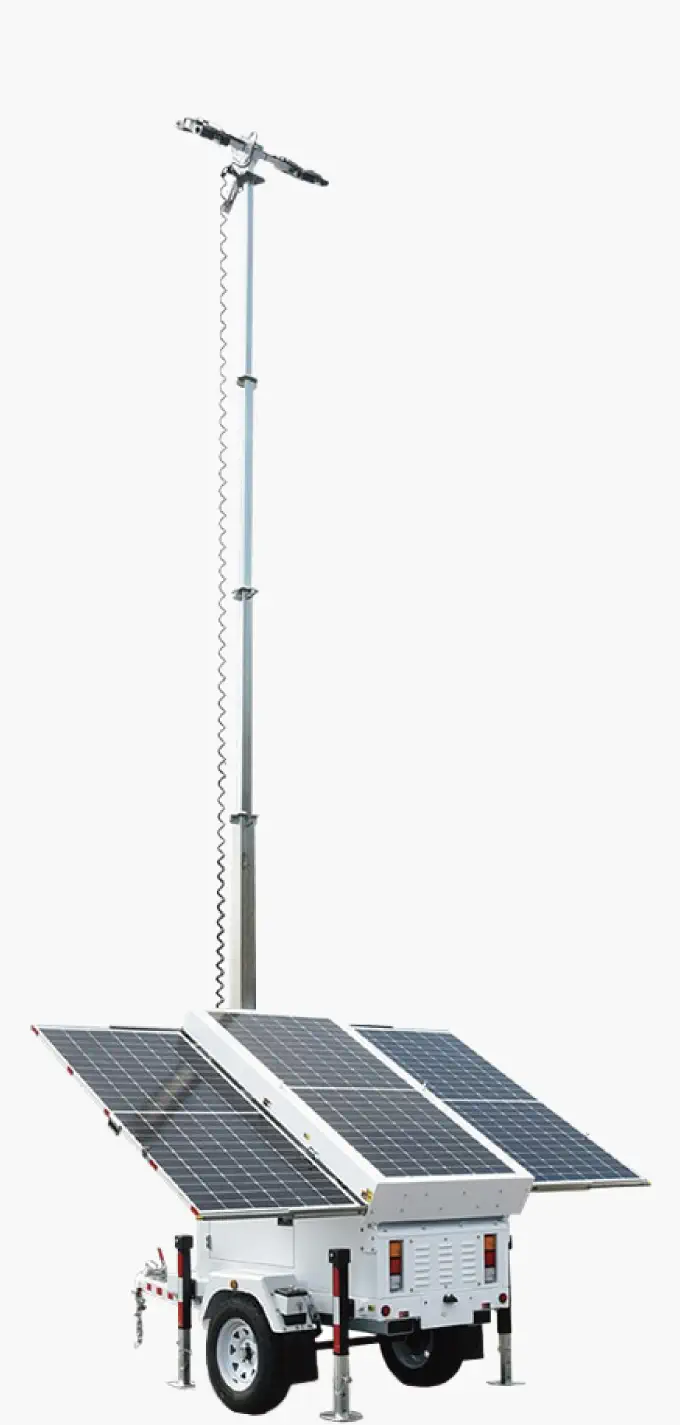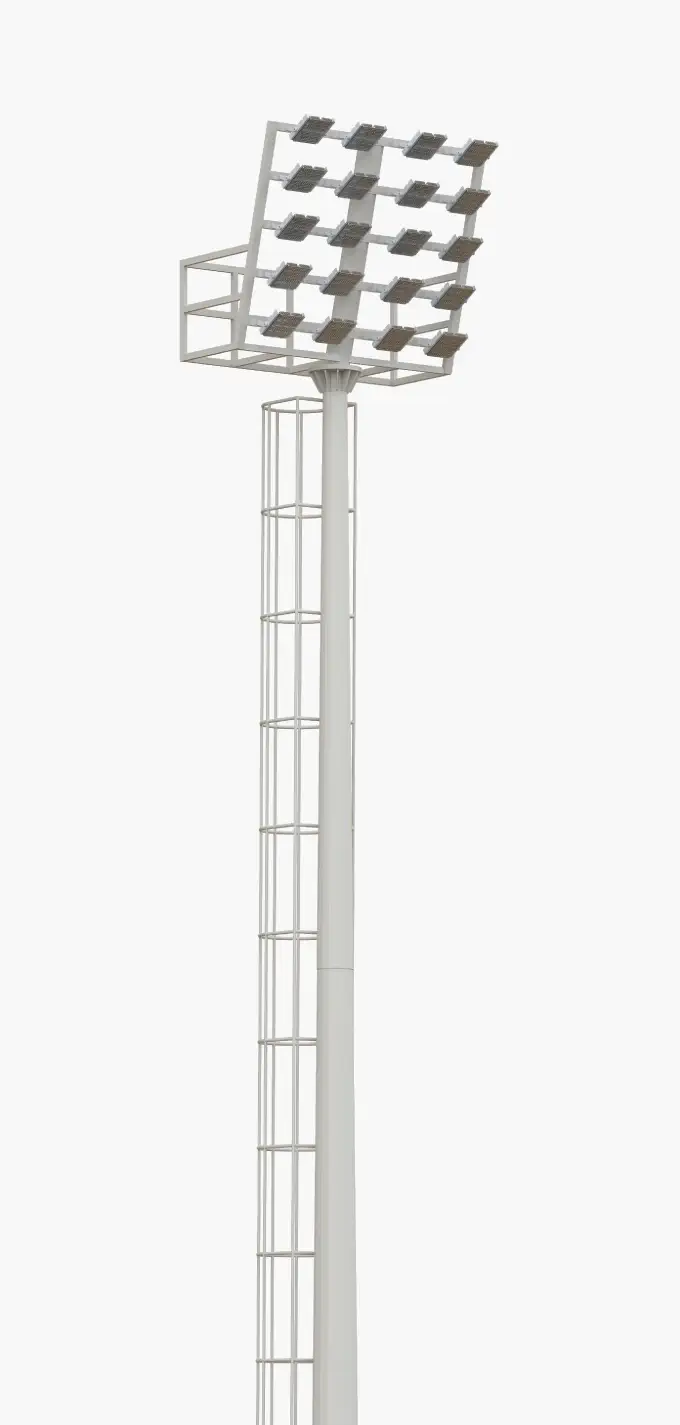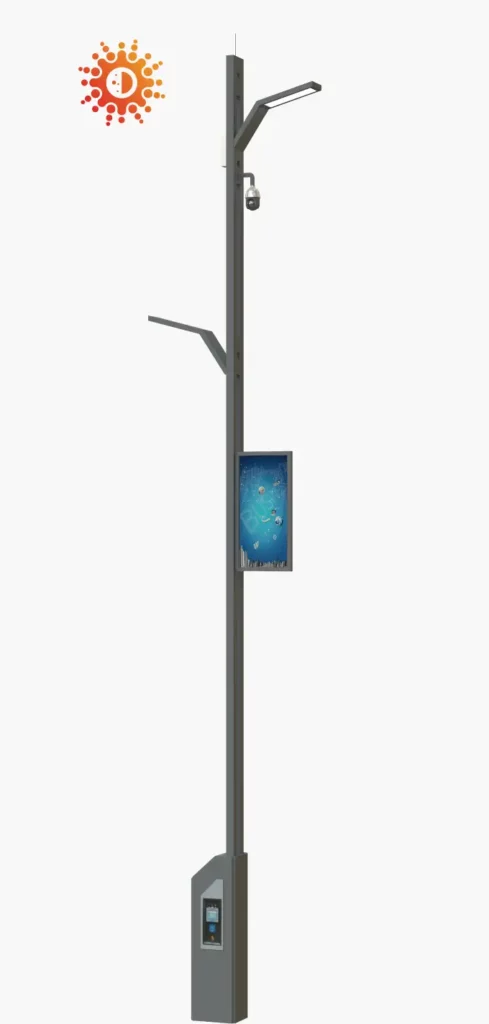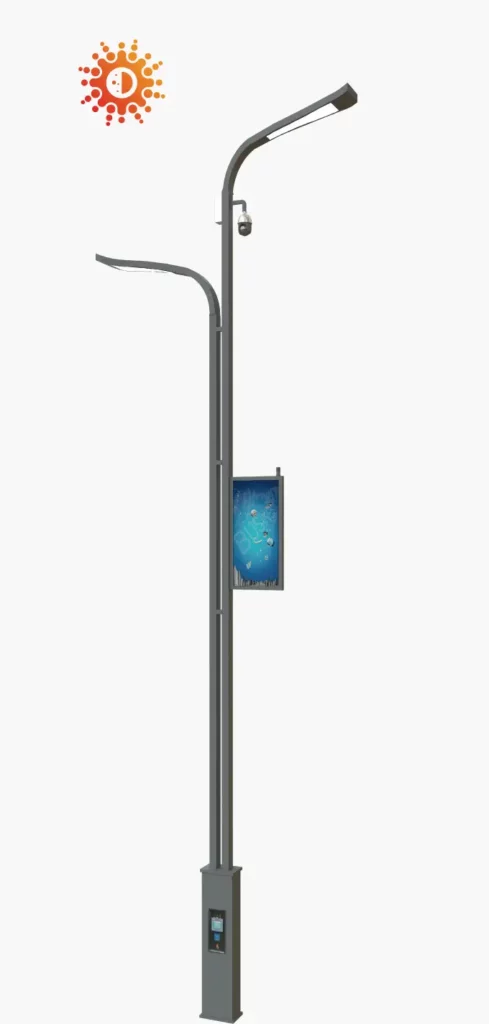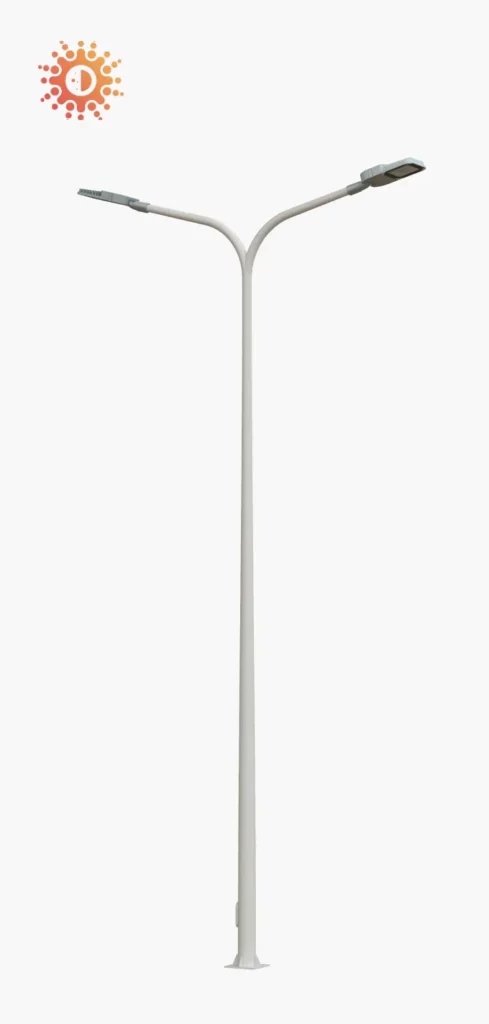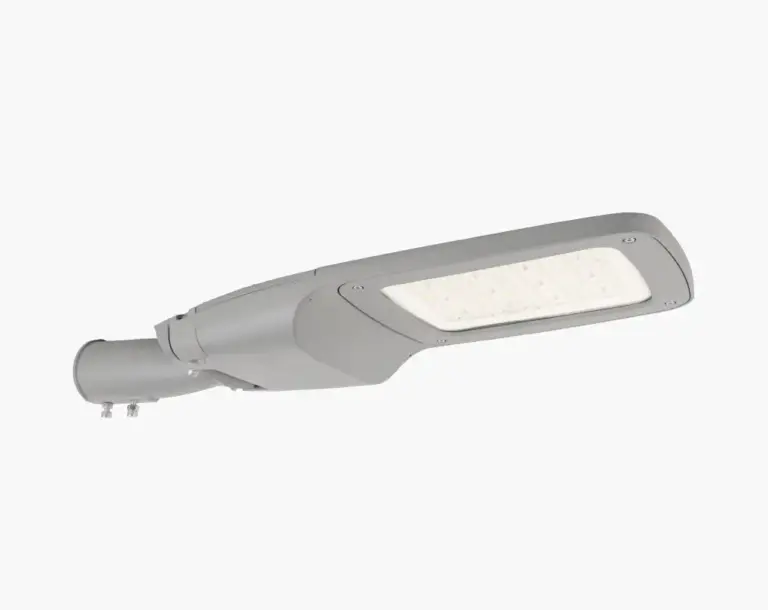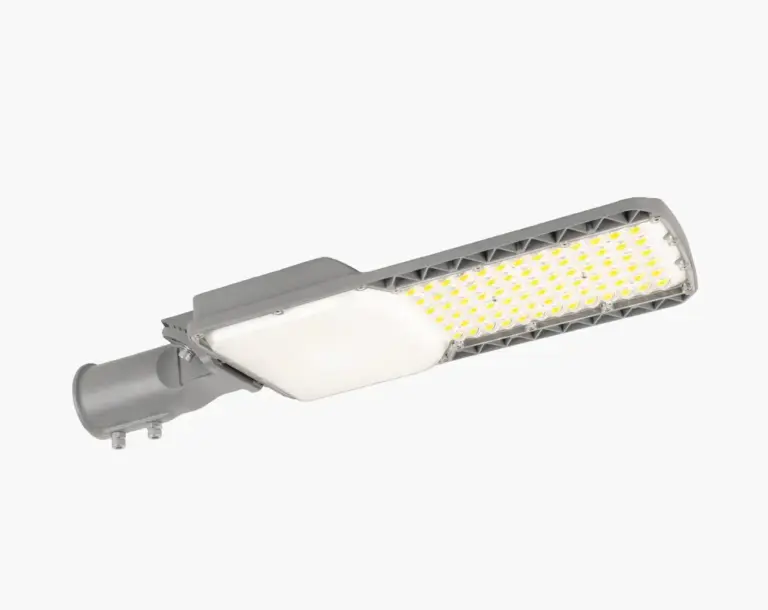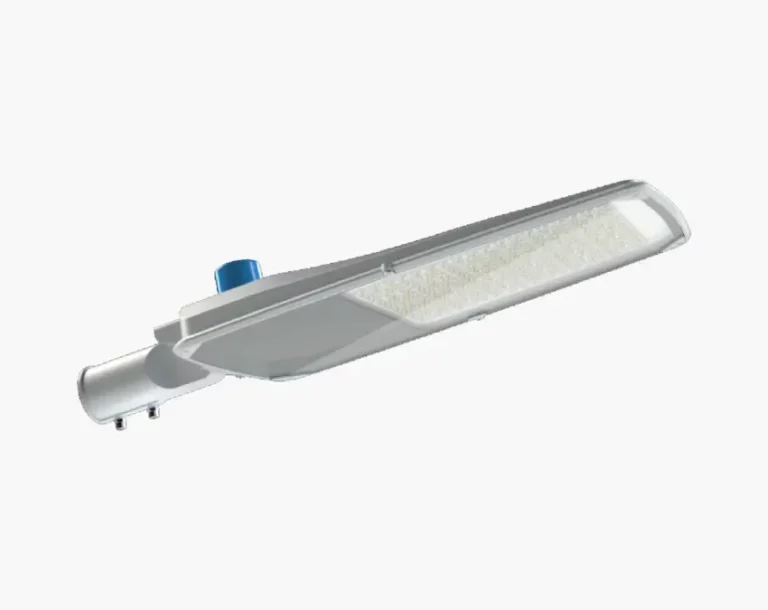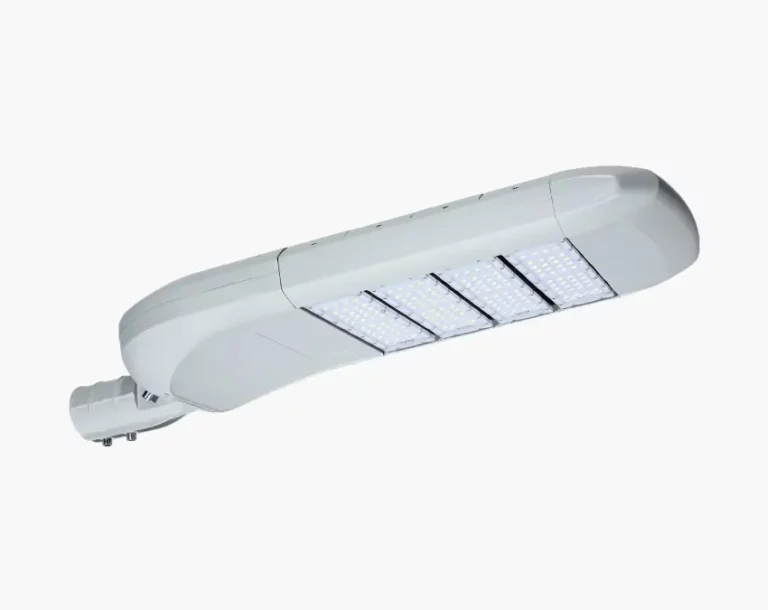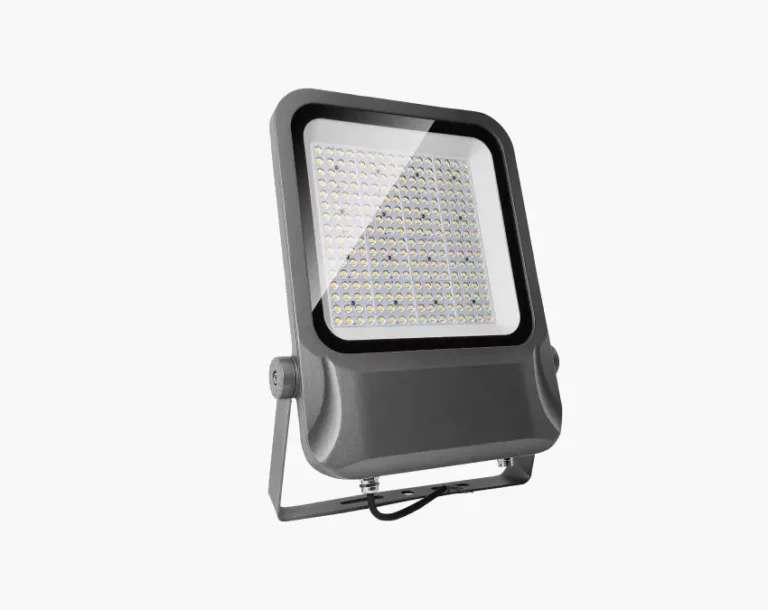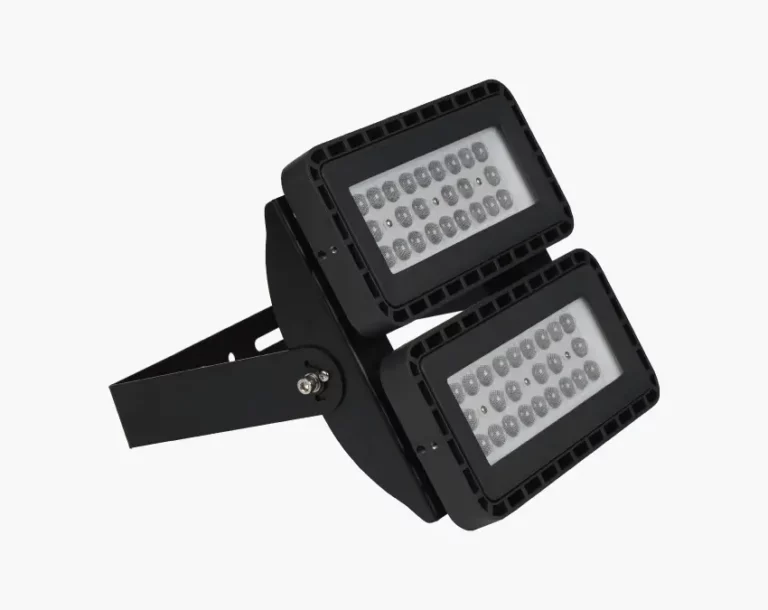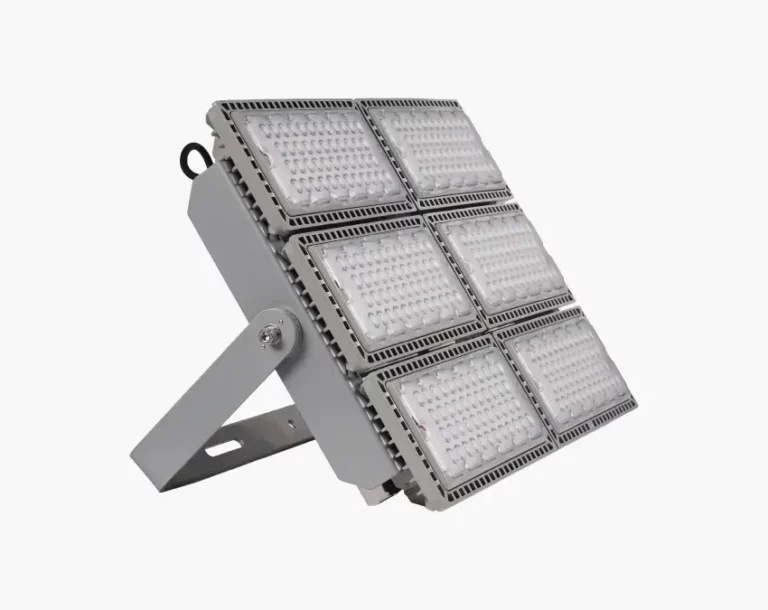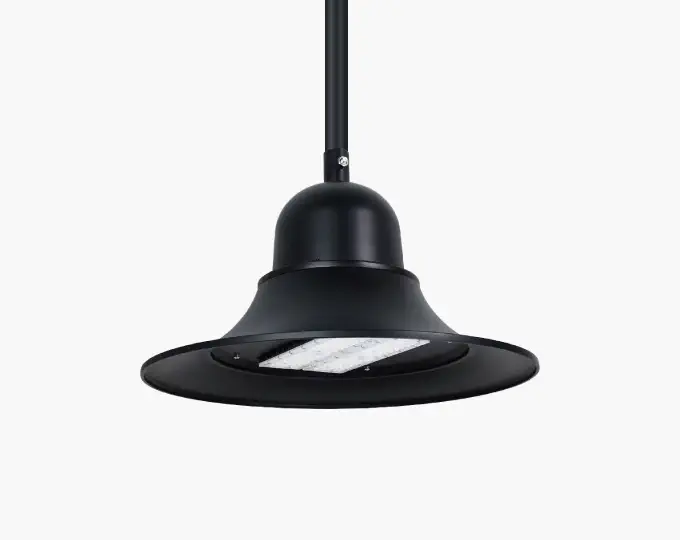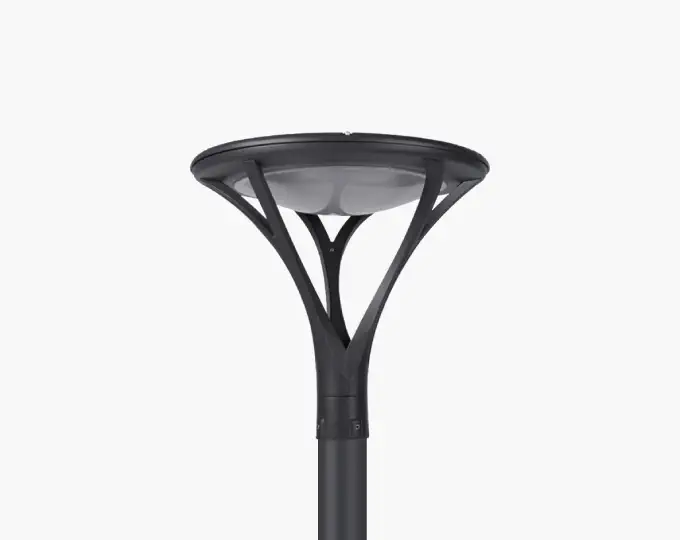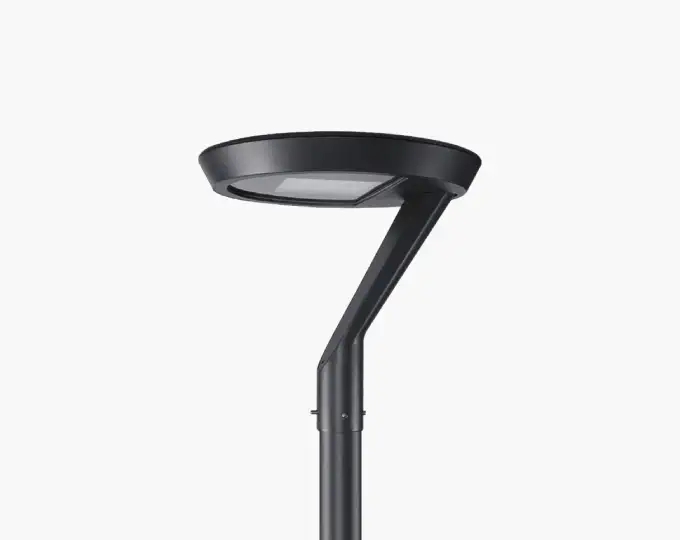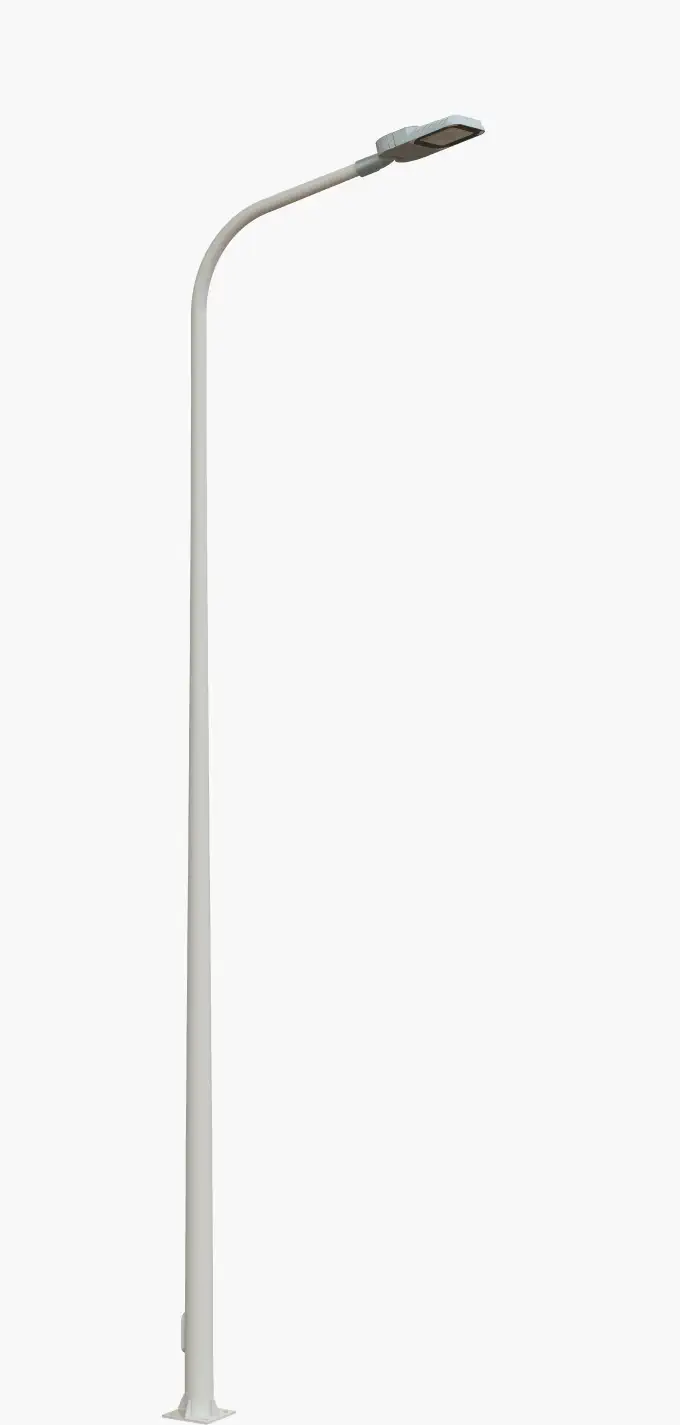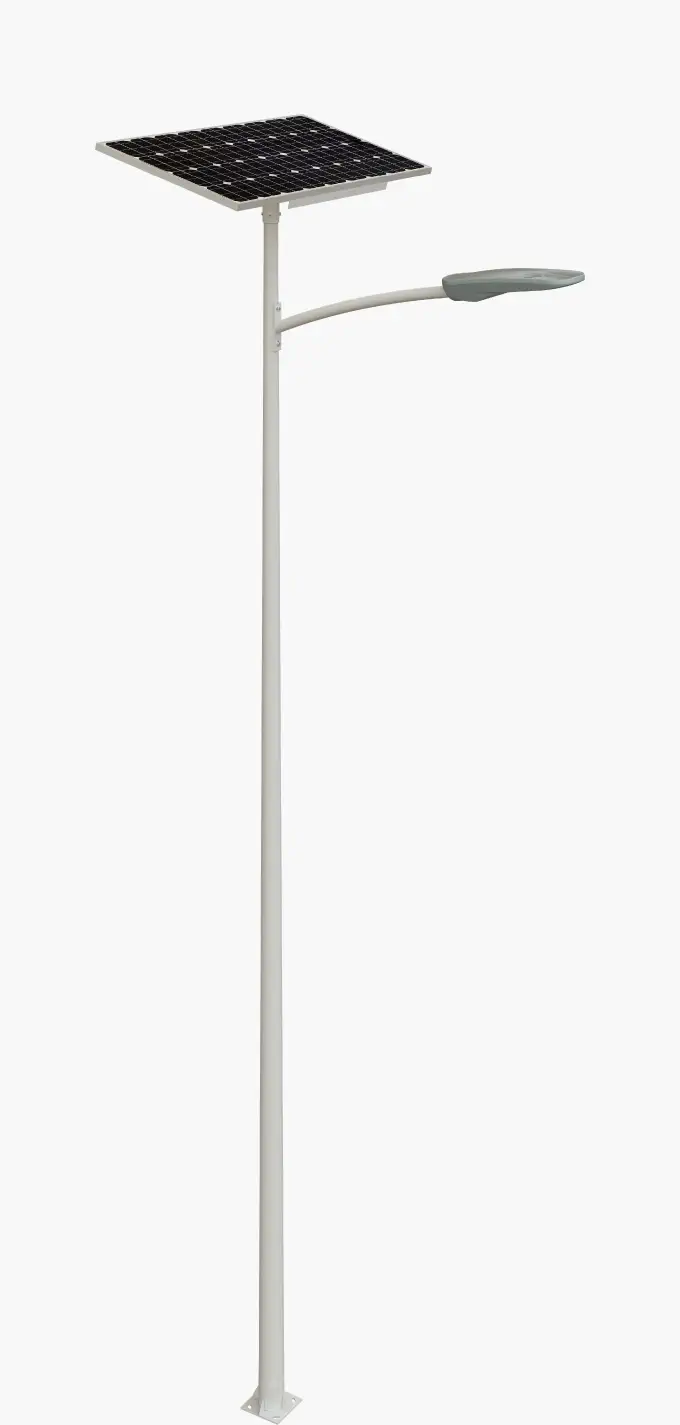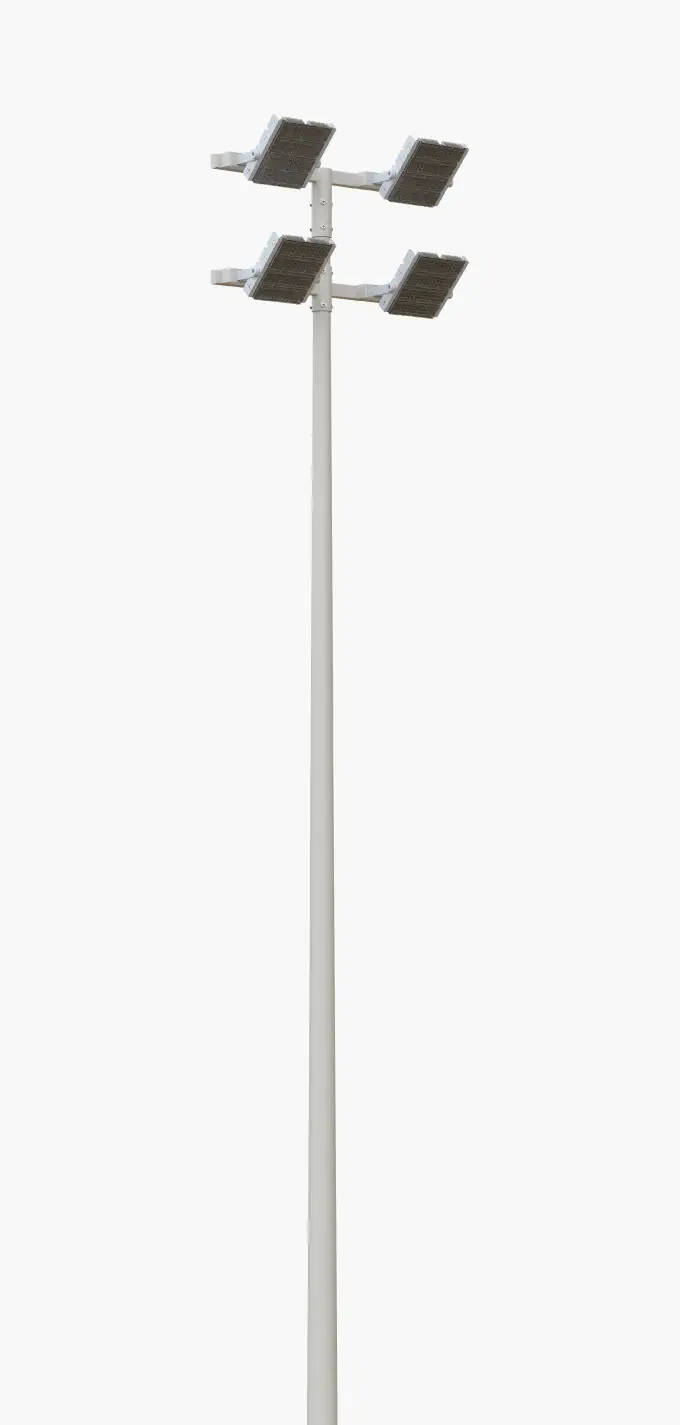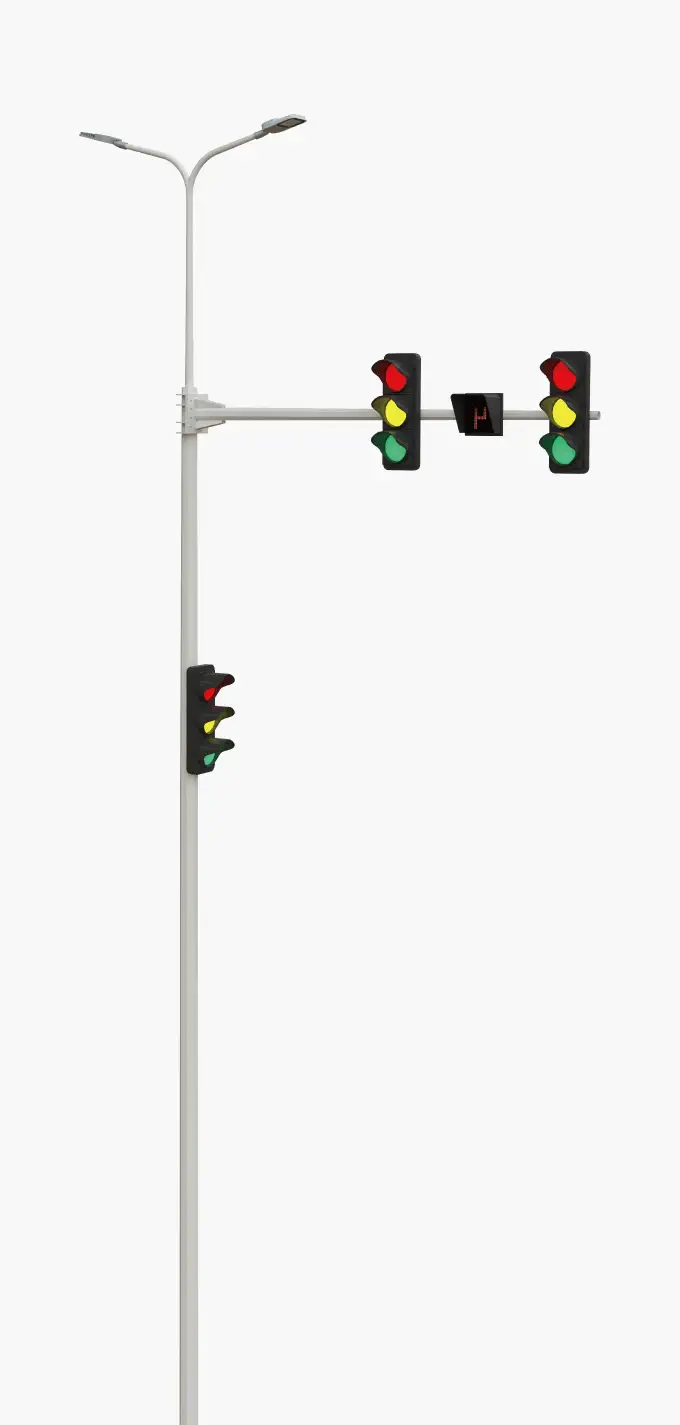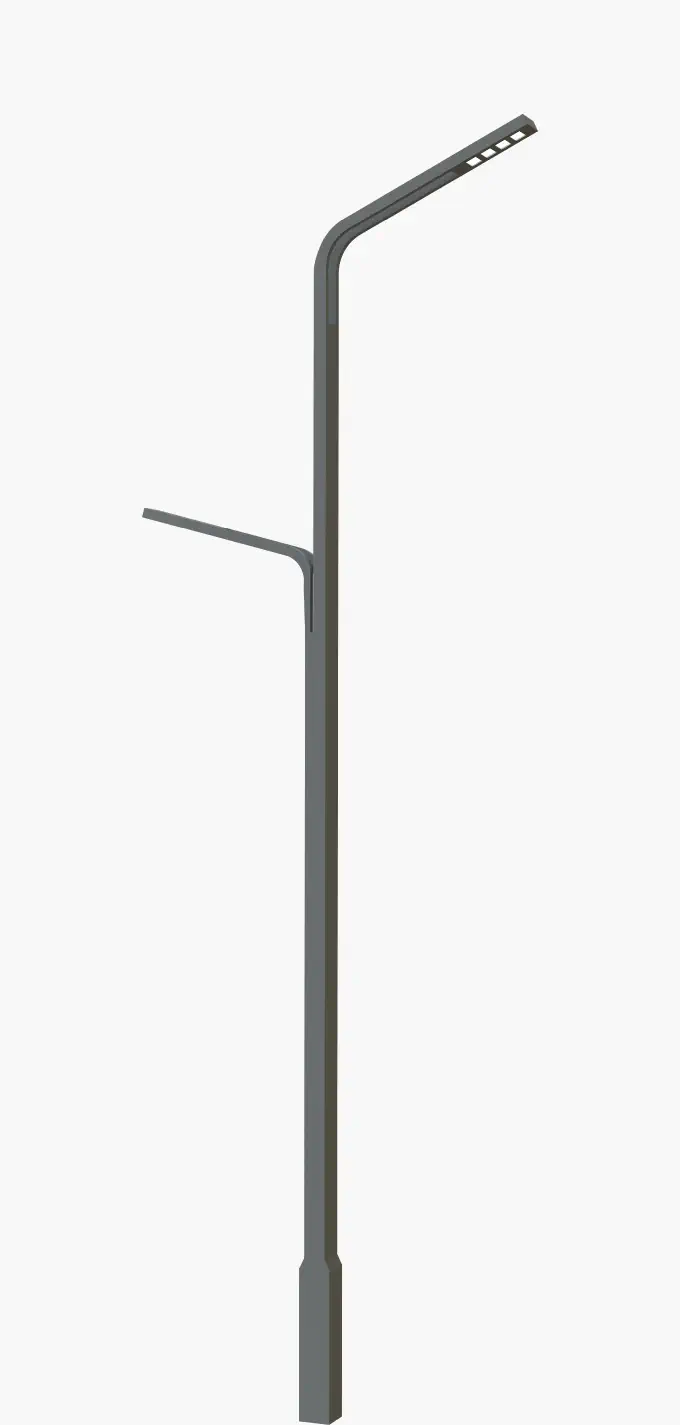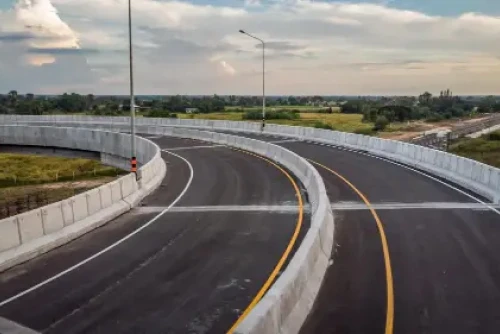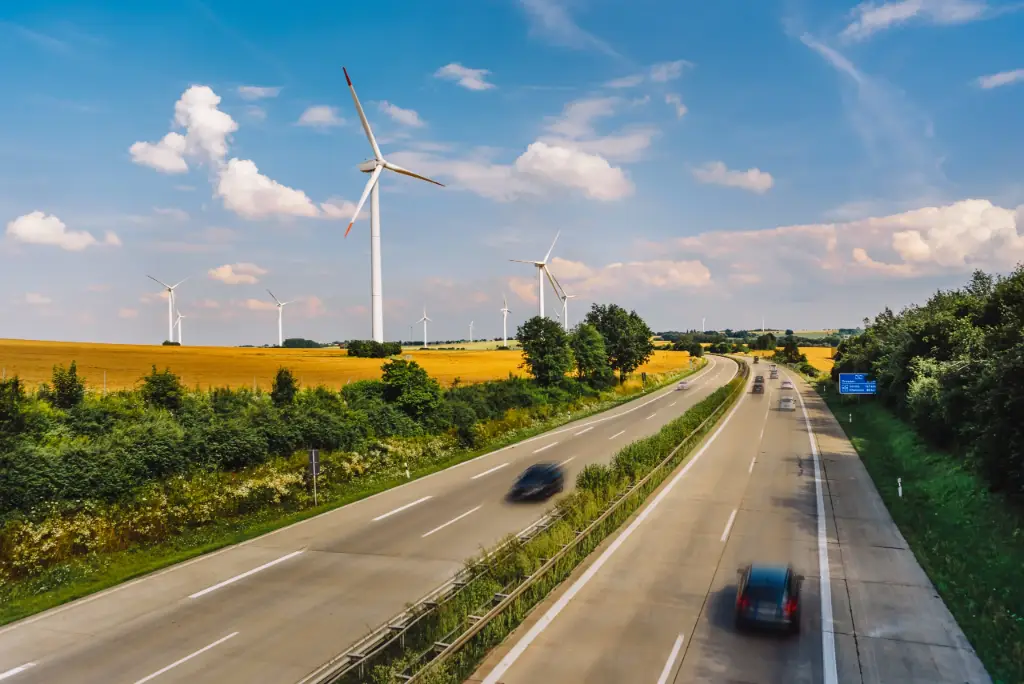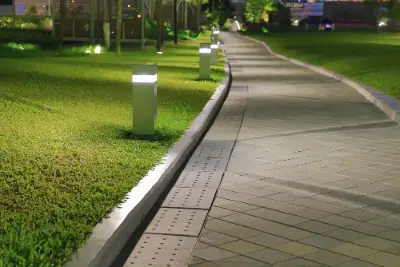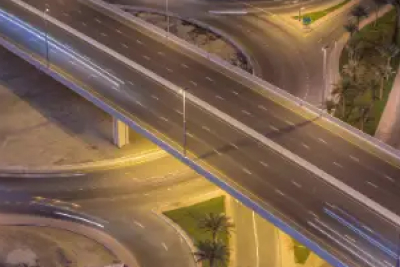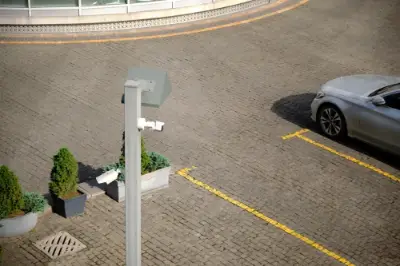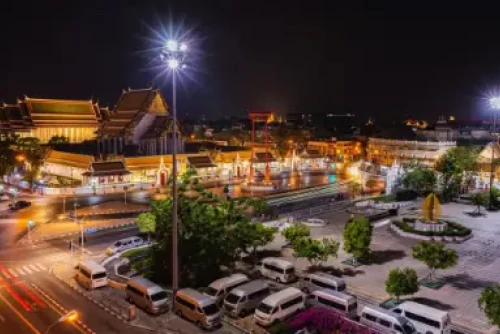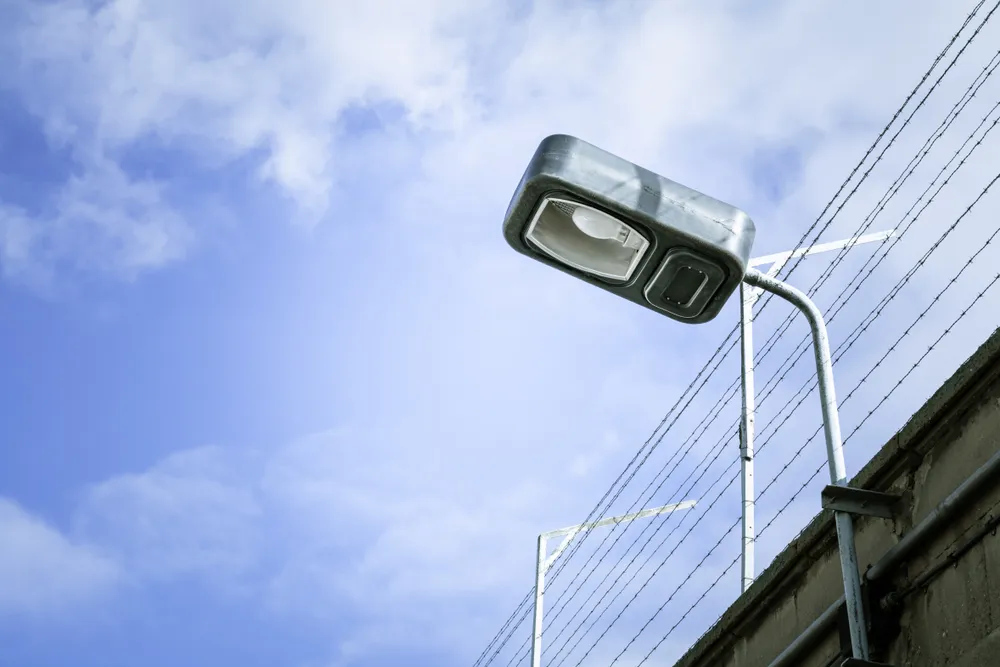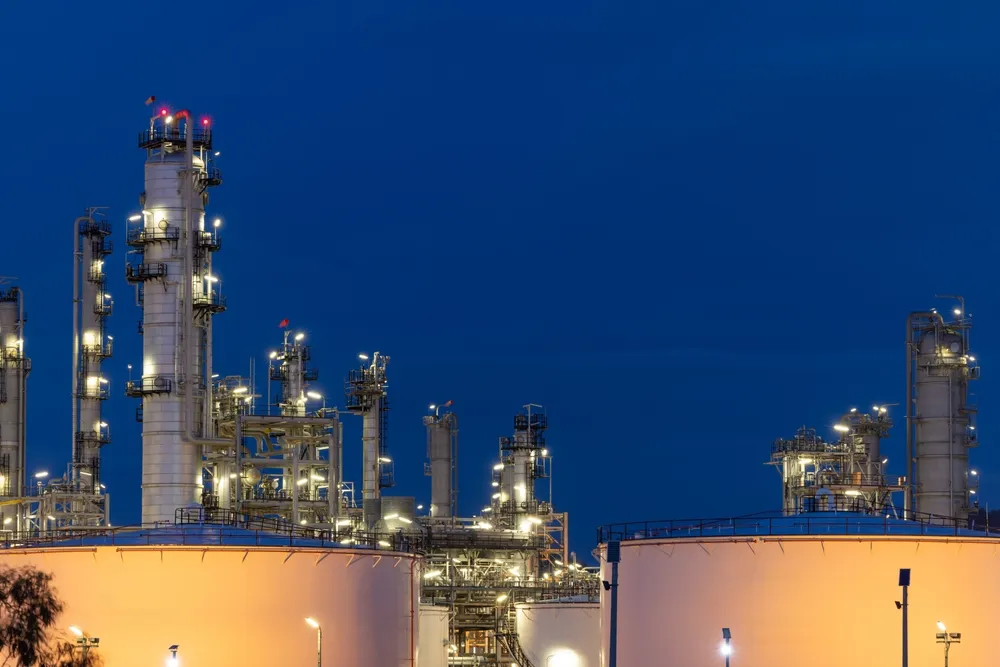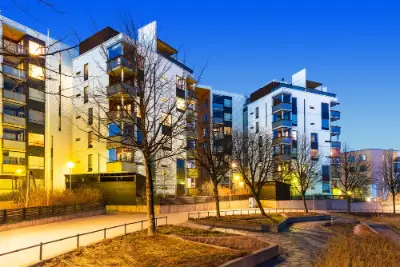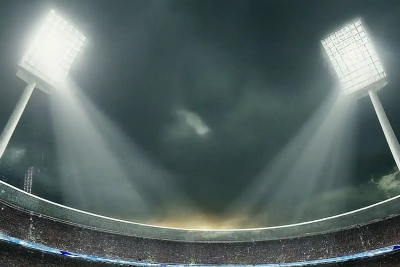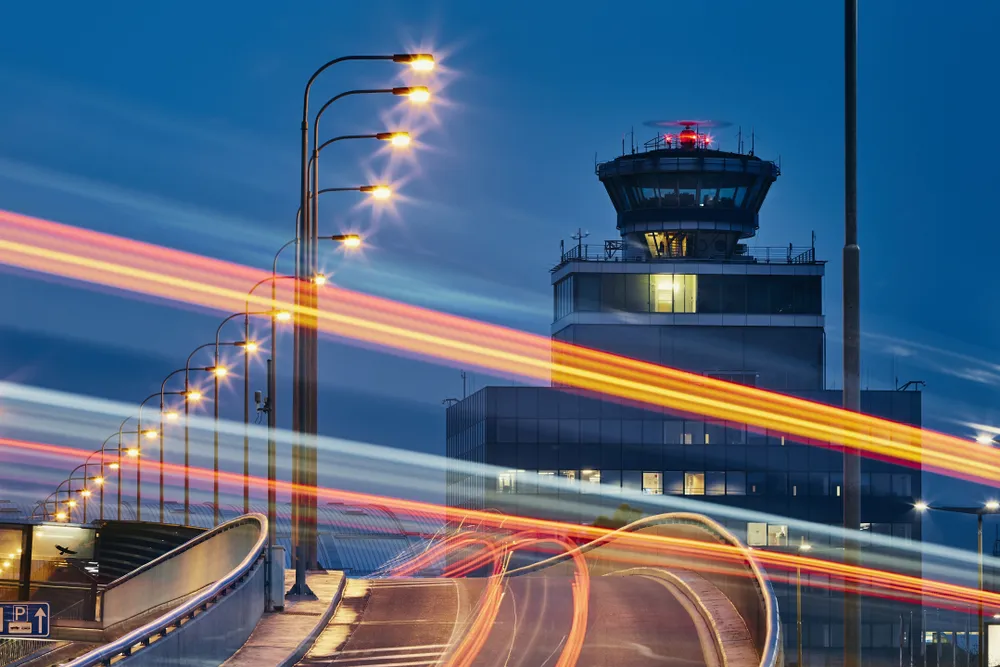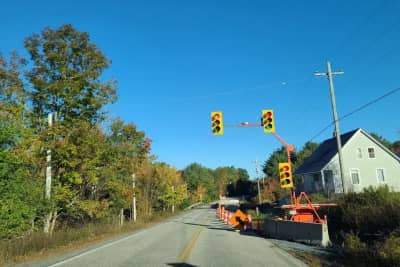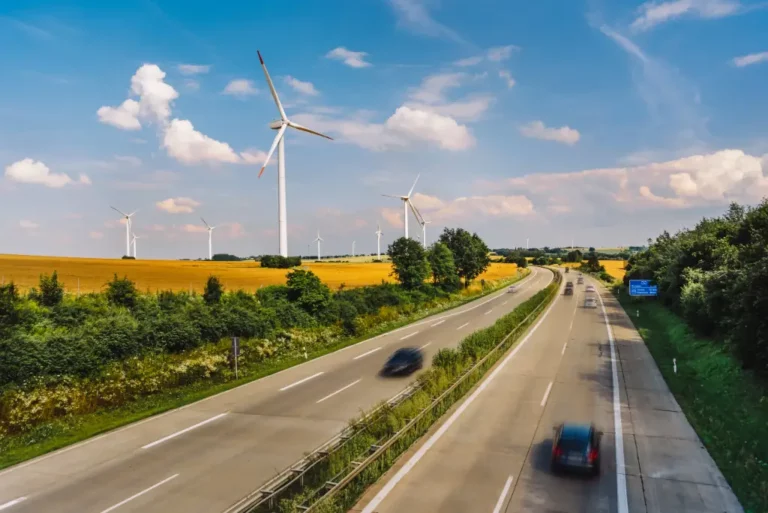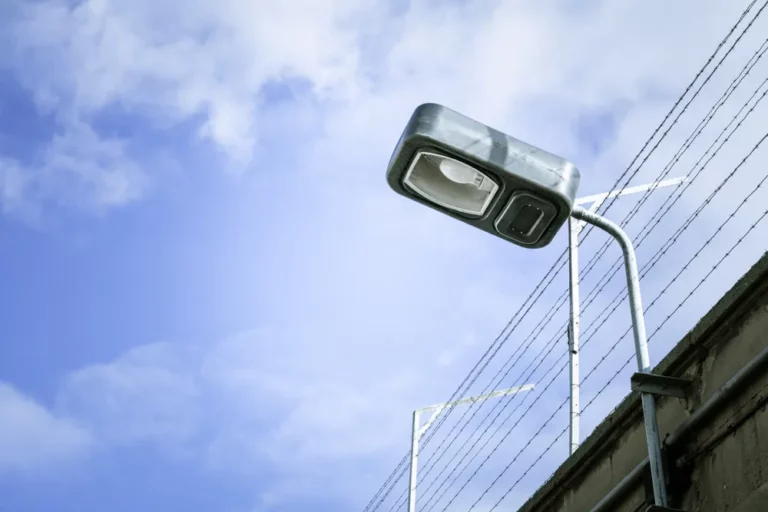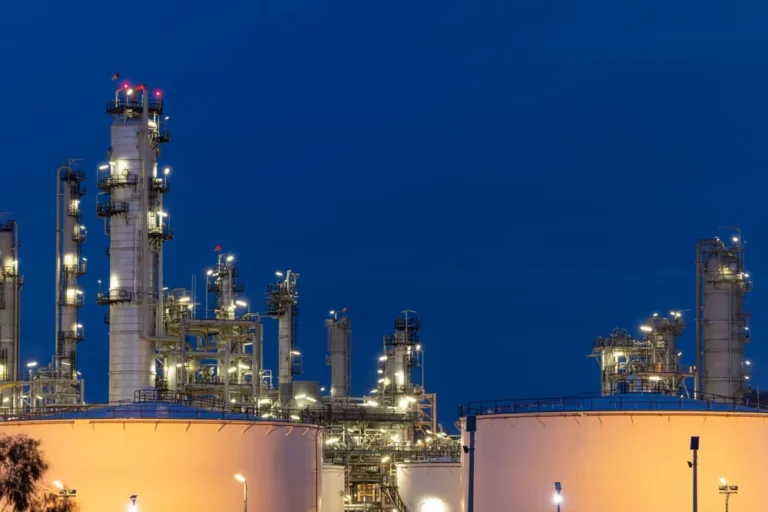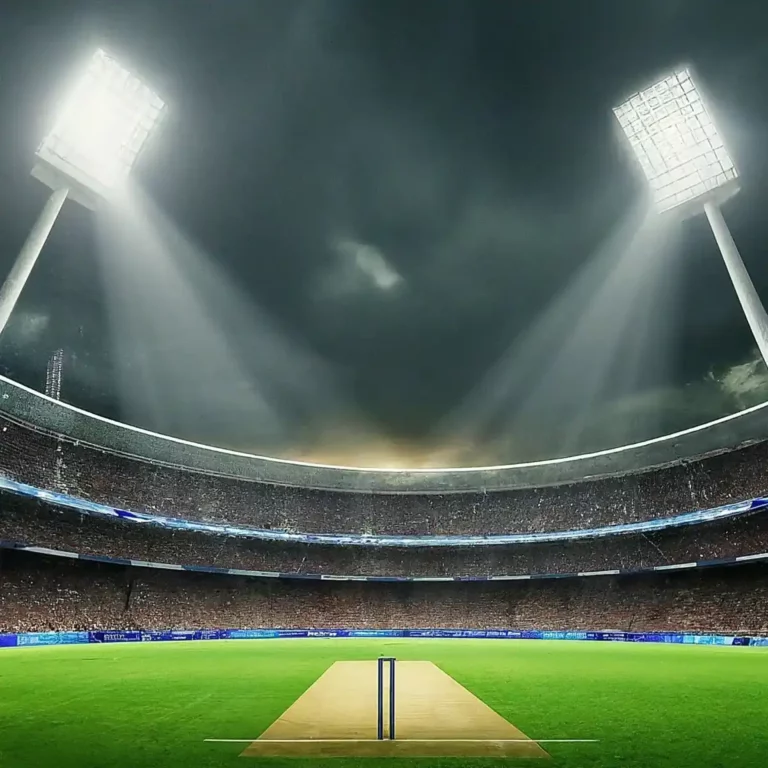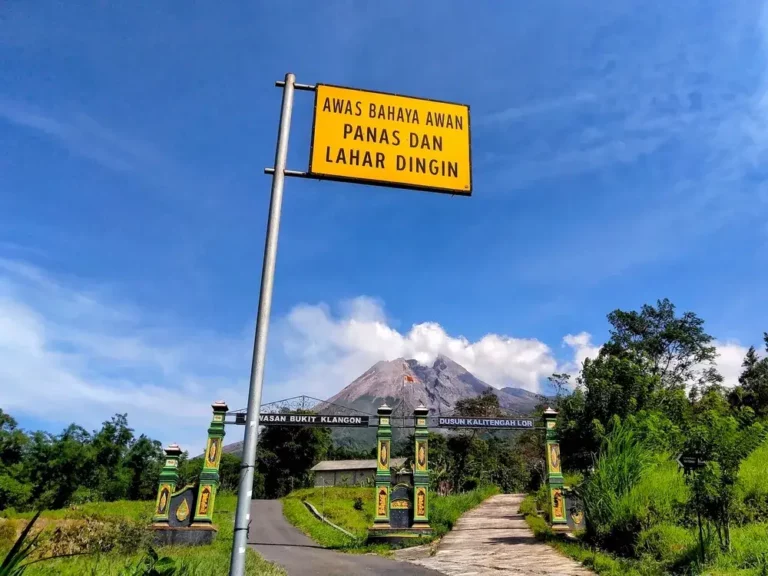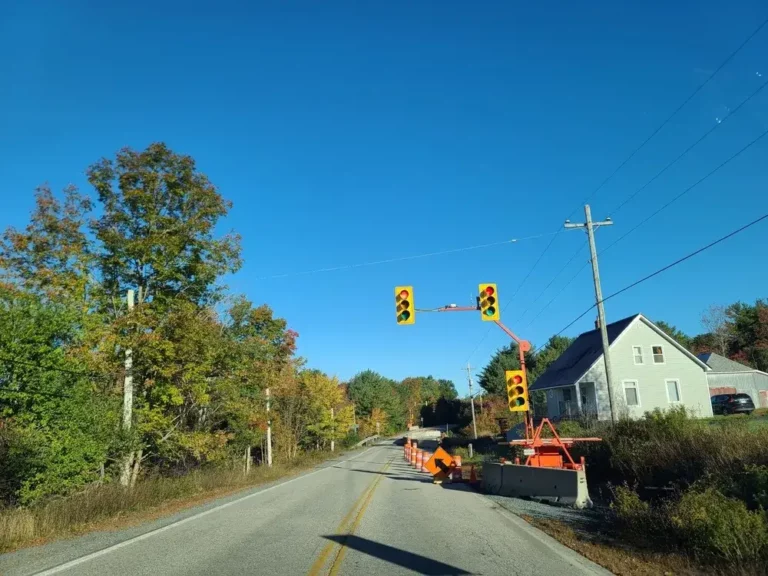FAQ
- Home
- FAQ
Most Asked Questions
Different configurations will naturally result in different amounts of electricity and lighting duration. The configuration of solar street lights is generally determined by the local environment. Normally, when choosing solar street lights, the parameters of the solar street lights will be configured according to the actual local conditions.
The maintenance of solar street lights is relatively simple, and it is usually recommended to check them every 6 months, including cleaning the solar panels, checking the battery status and the working condition of the lamps.
Power factor and efficiency are numerical values that reflect the electrical performance of the driver. The higher the power factor and efficiency, the higher the cost. Please feel free to contact us for other questions, and we will reply you as soon as possible.
High mast lights using LED technology have a longer service life than traditional high-intensity discharge (HID) lamps and can withstand the impact of harsh environments, so they do not need to be replaced or maintained frequently, saving maintenance and replacement costs.
Maximum DOD setting 85% (The battery will stop discharging when the power level reaches 15% of its capacity)
DOD @ 90% —- 1500 cycles
DOD @ 80% —- 3000 cycles
DOD @ 50% —- 5000 cycles
Here are some key factors to consider when choosing solar panels:
Types of solar panels: There are three main types of solar panels on the market: monocrystalline silicon, polycrystalline silicon, and thin-film panels. Monocrystalline silicon panels have the highest efficiency and a stylish appearance, but are more expensive; polycrystalline silicon panels are slightly less efficient, but are relatively cheap; thin-film panels are lightweight and flexible, suitable for installation on curved or uneven surfaces, but have the lowest efficiency.
Power and size: The power and size of a solar panel are key factors in selection. Power determines the output capacity of the panel, while size affects the flexibility of installation.
Installation method: There are many options for installing solar panels, including rooftop installation, ground installation, mobile installation, etc. Different installation methods are suitable for different scenarios and needs.
Please let us know your needs so that we can get the best panel recommendation.
The maintenance of solar panels is relatively simple, mainly including regular cleaning to remove dust and dirt, checking whether the connection wires and brackets are firm, and checking for damaged battery cells.
The required space depends on the power of the panel and the installation location. Generally speaking, about 7 to 10 square meters of area are required for each kilowatt (kW) of solar panels.
Please send us a drawing with all specifications and we will provide you with an accurate price. Or please provide dimensions such as height, wall thickness, material, and top and bottom diameters.
Solar panels are usually made of fairly strong tempered glass panels. Regular manufacturers will put solar panels through hail tests, so the panels of this type of solar street light have a certain ability to withstand even heavy rain or hail.
What Does Your Question Relate To?
01. Solar street light
Q1:What should I do if the solar street light does not light up?
A1:If the solar street light does not light up, first check whether the solar panel is blocked and clean the dust and dirt on the surface of the panel; secondly check whether the battery is charged and replace the damaged battery; finally check whether the controller is working properly and replace the damaged controller.
Q2:What should I do if the brightness of the solar street light is not enough?
A2:Check whether the power of the solar panel is sufficient, and replace it with a panel with a higher power; check whether the light efficiency of the lamp is high enough, and replace it with a lamp with a higher light efficiency; check whether the capacity of the battery is sufficient, and replace it with a battery with a larger capacity.
Q3:What should I do if the battery life of solar street lights is short?
A3:Charge and discharge the battery regularly to extend the battery life; avoid over-discharging the battery and charge it in time when the power is less than 20%; choose good quality batteries to extend the battery life.
Q4:How much electricity can a solar street light generate?
A4:Different configurations will naturally result in different amounts of electricity and lighting duration. The configuration of solar street lights is generally determined by the local environment. Normally, when choosing solar street lights, the parameters of the solar street lights will be configured according to the actual local conditions.
Q5:Can solar street lights be installed in shaded areas?
A5:Solar street lights rely on sunlight for charging, so it is best to install them in sunny places. If they are installed in shaded areas, their charging efficiency and use effect may be affected.
Q6:Do solar street lights need regular maintenance in the later stage?
A6:Yes, solar street lights need regular maintenance, including cleaning solar panels, checking battery status, checking controller functions, etc., to ensure the normal operation of the street lights and extend their service life.
Q7:How do solar street lights work?
A7:Solar street lights absorb sunlight during the day through solar panels, convert it into electricity and store it in batteries. At night, the controller automatically turns on the LED lamps according to changes in ambient light and uses the stored electricity to provide lighting.
Q8:What are the main components of solar street lights?
A8:Solar street lights are mainly composed of solar panels, LED light sources, batteries, controllers and light poles. Solar panels are responsible for collecting sunlight, batteries store electricity, and controllers manage the charging and discharging process.
Q9:What are the requirements for the color temperature and color rendering index of solar street lights?
A9:The color temperature of solar street lights is usually selected between 4000K and 6000K to provide bright and natural light, suitable for night activities. The color rendering index (CRI) should be higher than 80 to ensure the true restoration of object colors and improve visual comfort.
Q10:How often do solar street lights need to be maintained?
A10:The maintenance of solar street lights is relatively simple, and it is usually recommended to check them every 6 months, including cleaning the solar panels, checking the battery status and the working condition of the lamps.
Q11:Can solar street lights work properly on cloudy or rainy days?
A11:Solar street lights can still work on cloudy or rainy days, but the lighting time and brightness may be affected. Well-designed systems can usually provide basic lighting in continuous rainy weather.
Q12:What is the service life of solar street lights?
A12:High-quality solar street lights usually have a service life of 5 to 10 years, depending on product quality and maintenance. The life of solar panels is generally 25 to 30 years, but their efficiency may gradually decrease.
Q13:What should I pay attention to when installing solar street lights?
A13:When installing, make sure that the solar panels are facing the direction of full sunlight and avoid obstructions. At the same time, the height and spacing of the lamps should be reasonably planned according to specific lighting needs to ensure uniform light coverage.
Q14:How is the anti-theft design of solar street lights?
A14:Many of our solar street lights feature an integrated design that encapsulates the battery and controller inside the light fixture, increasing theft resistance. In addition, the material and structure of the light pole should also be selected to be sturdy and durable to prevent theft or damage.
Q15:How cost-effective are solar street lights?
A15:Although the initial investment in solar street lights may be higher than traditional street lights, their low energy consumption, low maintenance costs and long service life can significantly reduce operating costs and electricity bills in the long run.
Q16:How does solar street light work?
A16:During the day, photovoltaic modules capture energy from the sun and store it in batteries using our Power365 technology. At night: the battery releases the stored solar energy to power the LED lights. Our solar street light system can ensure that solar street lights can light up every day regardless of weather conditions.
Q17:Benefits of solar street lights?
A17:Solar street lights are more competitive than grid lighting because they are easy to install, do not require cables, do not require electrical cabinets, and can operate autonomously. 100% solar energy, no need to connect to the grid, high availability. Powerful solar lighting, equivalent to the grid. No maintenance required for 10 years. Quick and easy installation. No need to pay electricity bills anymore! Withstands the most extreme weather conditions (wind resistance EN40 and high temperature resistance). Green and environmentally friendly.
Q18:How to choose the system voltage 12V or 24V for solar street lights?
A18:We use high voltage and low current technical solutions to reduce the working current, thereby improving the energy utilization of the system, so we only use 12V or 24V systems, not 3.2V or 6.4V systems. At the same time, it mainly focuses on the working power of the light source. If the working power is relatively large, we will use 24V otherwise we will use 12V system.
02. LED Outdoor Light
Q1:For the same power, why do different suppliers provide different brightness?
A1:Different chips, or the same chip but different brightness versions. The brightness will be different. But for the same chip and the same brightness version, the brightness will be slightly different. But please clarify the brightness difference between LEDs and lamps.
Q2:What is color temperature?
A2:Kelvin is a way to measure "temperature", and the light emitted by LED lamps will emit a certain color, which we classify as CTT (Kelvin). For example, warm (lower color temperature) light is often used in public areas to promote relaxation, while cool (higher color temperature) light is used to improve attention in offices.
Q3:What is the color rendering index?
A3:The color rendering index is a numerical value that reflects the color of the physical object. The higher the color rendering index, the higher the cost.
Q4:What is power factor and efficiency?
A4:Power factor and efficiency are numerical values that reflect the electrical performance of the driver. The higher the power factor and efficiency, the higher the cost. Please feel free to contact us for other questions, and we will reply you as soon as possible.
Q5:What are the advantages of street lights over traditional street lights?
A5:LED street lights have the advantages of high brightness, high efficiency, long life, energy saving and environmental protection. They do not contain harmful substances such as mercury and lead, and have little impact on the environment during production and recycling. They are truly green lighting solutions.
Q6:How is the beam management of LED street lights?
A6:The directional characteristics of LED light sources enable the beam to be precisely controlled. Through advanced optical design and light distribution technology, LED street lights can achieve efficient light distribution, reduce light pollution and improve lighting efficiency.
Q7:What are the common problems and solutions when LED street lights fail?
A7:Common problems include LED driver failure, LED chip quality problems, insufficient surge protection device (SPD) function, insufficient IP/IK rating, poor heat dissipation, poor powder coating quality, unreasonable lighting distribution and low efficiency. Solutions involve selecting LED drivers from well-known brands, using high-quality LED chips, installing additional SPDs, improving IP and IK ratings, designing effective heat dissipation systems, ensuring the quality of powder coatings and selecting appropriate optical lenses to achieve optimal lighting distribution.
Q8:What does the maintenance of LED street lights include?
A8:Maintenance of LED street lights includes regular inspection of the appearance and internal wiring of the lamps to ensure that the lamp structure is stable, the waterproof seal is intact, and there is no physical damage, as well as checking whether the internal wiring is intact and there are no exposed and damaged cables. The emitting surface of the LED street light should also be cleaned regularly to maintain its clarity and brightness.
03. LED flood Light
Q1:What are the advantages of LED flood lights?
A1:LED floodlights have the advantages of high luminous efficiency, good light quality, pure light color and rich colors. They can convert almost all electrical energy into light energy, do not contain ultraviolet and infrared rays, generate little heat, and belong to green lighting sources.
Q2:How to solve the light color temperature problem of LED flood lights?
A2:If the light color of the LED floodlight does not meet expectations, you can choose a suitable light color temperature, such as cold white light or warm white light. Some LED lamps provide dimming functions, which can change the light color temperature by adjusting the brightness to achieve satisfactory results.
Q3:What should I do if the LED flood light has a flickering problem?
A3:The flickering of LED floodlights may be caused by unstable power supply voltage or poor lamp design. First, make sure that the LED bulb is firmly fixed, and then check whether the power supply provides stable voltage and current. If the problem persists, you may need to replace the new bulb or reset the power supply.
Q4:What should I do if the LED flood light overheats?
A4:LED floodlights may overheat due to poor heat dissipation. You should choose LED lamps with good heat dissipation performance and ensure that the lamps are installed in a well-ventilated environment. Heat dissipation devices such as heat sinks and heat dissipation glue can be used to improve the heat dissipation effect.
Q5:Does LED flood light require maintenance?
A5:Yes, LED floodlights require regular maintenance, including cleaning the lens and radiator, checking the power supply and wiring, and ensuring the structure of the lamp is stable. This helps maintain the optimal performance of the lamp and prolong its life.
04. Hight mast Light
Q1:What are the advantages of high mast lights?
A1:
• Brightness: Due to the high installation position, high mast lights are usually equipped with high-power LED lights, which can illuminate areas of more than ten meters and will not be blocked by trees or buildings, ensuring the safety of drivers and pedestrians.
• Wide lighting area: The higher the high mast light, the wider the road it can illuminate, which is very suitable for illuminating large areas such as highways and squares.
• Easy maintenance: Some high mast lights are designed to be liftable, making regular maintenance relatively easy. The lamp can be controlled to drop to 2.5 meters above the ground, which is convenient for operators to maintain.
Q2:Is the maintenance cost of high mast lights?
A2:High mast lights using LED technology have a longer service life than traditional high-intensity discharge (HID) lamps and can withstand the impact of harsh environments, so they do not need to be replaced or maintained frequently, saving maintenance and replacement costs.
Q3:Can high mast lights save energy costs?
A3:Yes, LED high mast lights have better energy efficiency and can save up to 65% of energy costs compared to traditional lighting systems.
Q4:What are the benefits of LED high mast lights?
A4:LED high mast lights overcome almost all the disadvantages of high pressure sodium lamps. They are more energy-efficient, have a longer lifespan, perform well in bad weather, and have an average lifespan of more than 50,000 hours, which is twice that of HID lamps. This means less maintenance costs and less need for replacement.
05. Lithium Battery
Q1: How many times can your battery be fully charged and discharged?
A1: Maximum DOD setting 85% (The battery will stop discharging when the power level reaches 15% of its capacity)
DOD @ 90% ---- 1500 cycles
DOD @ 80% ---- 3000 cycles
DOD @ 50% ---- 5000 cycles
Q2: What is the expected life of a lithium iron phosphate battery?
A2: The lithium iron phosphate batteries we use are known for their long life, reaching 5,000 cycles at 50% depth of discharge (DOD). Lithium iron phosphate batteries can last up to 10 times longer than lead-acid batteries in the same application.
Q3: Are lithium iron phosphate batteries safer than other lithium batteries?
A3: Lithium iron phosphate batteries have significant advantages in terms of safety and environmental awareness. Lithium iron phosphate batteries are safer than other lithium-ion batteries that use different cathode materials.
Q4: What is the performance of lithium iron phosphate batteries at high temperatures?
A4: High temperatures can adversely affect the performance of lithium iron phosphate batteries, resulting in reduced capacity, lower energy storage efficiency, and accelerated self-discharge rates. The maximum temperature range of the battery management system (BMS) is usually 60-80°C. Beyond this temperature range, the BMS will shut down the battery to protect the battery.
06. Solar Panel
Q1: What is the efficiency of solar panels?
A1: Solar panel efficiency can range from 15% to 22%, depending on the type of panel and manufacturing technology. Monocrystalline silicon panels are generally the most efficient, while polycrystalline silicon and thin-film panels are less efficient.
Q2: What are the factors that affect the performance of solar panels?
A2: Factors that affect the performance of solar panels include light intensity, temperature, shadows, installation angle and position, and the orientation of the panels. The ideal installation environment is one with sufficient light and no obstructions.
Q3: How to choose solar panels?
A3: Here are some key factors to consider when choosing solar panels:
Types of solar panels: There are three main types of solar panels on the market: monocrystalline silicon, polycrystalline silicon, and thin-film panels. Monocrystalline silicon panels have the highest efficiency and a stylish appearance, but are more expensive; polycrystalline silicon panels are slightly less efficient, but are relatively cheap; thin-film panels are lightweight and flexible, suitable for installation on curved or uneven surfaces, but have the lowest efficiency.
Power and size: The power and size of a solar panel are key factors in selection. Power determines the output capacity of the panel, while size affects the flexibility of installation.
Installation method: There are many options for installing solar panels, including rooftop installation, ground installation, mobile installation, etc. Different installation methods are suitable for different scenarios and needs.
Please let us know your needs so that we can get the best panel recommendation.
Q4: Are the solar panels of solar street lights fragile?
A4: Solar panels are usually made of fairly strong tempered glass panels. Regular manufacturers will put solar panels through hail tests, so the panels of this type of solar street light have a certain ability to withstand even heavy rain or hail.
Q5: What are the main differences between monocrystalline and polycrystalline solar panels?
A5: Material composition: Monocrystalline silicon panels: Made of high-purity single-crystal silicon, forming a continuous crystal structure. They usually appear dark black and have a more uniform appearance. Polycrystalline silicon panels: Made of multiple small polycrystalline grains, which visually form an appearance with blue or gray spots.
Efficiency: Monocrystalline silicon panels are usually more efficient than polycrystalline silicon panels because their crystal structure is more regular and electrons flow more freely, thereby improving the photoelectric conversion efficiency. The efficiency of monocrystalline panels is generally between 17% and 23%. Polycrystalline panels have slightly lower efficiencies, typically between 15% and 17%, because their crystal structure contains more grain boundaries that impede the flow of electrons.
Cost: Monocrystalline panels are more expensive to produce, primarily because their manufacturing process is more complex, requiring higher purity and more delicate processing. Polycrystalline panels are relatively inexpensive to produce, because their manufacturing process is relatively simple and does not require as high purity of raw materials as monocrystalline silicon.
Performance and durability: Monocrystalline panels generally have better mechanical properties and thermal stability due to their uniform crystal structure, which makes them perform better at high temperatures and have a longer service life. Although polycrystalline panels have slightly lower efficiencies, their performance is also relatively stable and their performance decays more slowly under temperature changes.
Appearance: Monocrystalline panels have a more uniform and aesthetically pleasing appearance, which may be a consideration in certain applications that have special requirements for appearance. The appearance of polycrystalline panels presents a unique texture due to their multi-grain structure, which may not be as aesthetically pleasing as monocrystalline panels.
Application scenarios: Monocrystalline silicon panels are suitable for space-constrained or high-efficiency applications, such as rooftop solar systems, due to their high efficiency. Polycrystalline silicon panels are suitable for cost-sensitive or space-sufficient projects, such as large solar power plants, due to their high cost-effectiveness.
In general, the choice of monocrystalline or polycrystalline solar panels depends on the specific application needs, budget and performance requirements.
Q6: How much higher is the efficiency of monocrystalline silicon panels than polycrystalline silicon panels?
A6: Monocrystalline silicon panels are generally more efficient than polycrystalline silicon panels because their crystal structure is more regular and electrons flow more freely, thereby improving the efficiency of photoelectric conversion. The efficiency of monocrystalline panels is generally between 17% and 23%. The efficiency of polycrystalline silicon panels is slightly lower, usually between 15% and 17%, because their crystal structure contains more grain boundaries, which hinder the flow of electrons.
Q7: How much space do solar panels need?
A7: The required space depends on the power of the panel and the installation location. Generally speaking, about 7 to 10 square meters of area are required for each kilowatt (kW) of solar panels.
Q8: What is the lifespan of solar panels?
A8: High-quality solar panels are usually designed to last 25 to 30 years, but the actual service life may be longer.
Q9: What needs to be done to maintain solar panels?
A9: The maintenance of solar panels is relatively simple, mainly including regular cleaning to remove dust and dirt, checking whether the connection wires and brackets are firm, and checking for damaged battery cells.
Q10: Can solar panels work on cloudy days or at night?
A10: Solar panels can still generate some electricity on cloudy days, but they cannot work at night or when there is no light. At this time, stored electricity or grid electricity can be used to supply power.
Q11: Can solar panels withstand bad weather?
A11: High-quality solar panels are designed to withstand severe weather conditions such as strong winds, rain, snow and hail. They are usually waterproof and can withstand certain mechanical stresses.
Q12: How does the power output of solar panels change over time?
A12: The power output of solar panels will decrease slightly over time, which is called power degradation. Most manufacturers provide a guarantee that the power will remain at more than 80% of the original output for 25 years.
Q13: How to choose the right solar panel?
A13: When choosing a solar panel, you need to consider the system's energy consumption needs, budget, installation location, lighting conditions and local climate factors. It is recommended to consult a professional solar installation consultant to determine the most suitable type and size of panels.
Q14: Why should solar panels be tilted?
A14: Our solar panels are mainly tilted at 15° or 30°, depending on the latitude, to optimize energy production in the worst conditions of the year. Due to the wind factor of the solar panel, the impact of mechanical size is also taken into account to select the tilt. The ultimate goal is to determine the power of the solar panel based on the energy needs, geographical area and tilt of the project.
07. Solar Controller
Q1: What is the role of a solar controller?
A1: The solar controller is the core component of a solar power generation system. It is an automatic control device that controls the charging of the battery by the solar panel and the power supply of the inverter load by the battery. It regulates and controls the charging and discharging conditions of the battery, and controls the power output of the solar cell module and the battery to the load according to the power demand of the load.
Q2: What are the main functions of a solar controller?
A2: The main functions of a solar controller include battery voltage regulation, protection against overheating/overload, protection against battery reverse charging, load control, and display and management. They protect the battery from overcharging and overdischarging, and provide system monitoring and fault diagnosis functions.
Q3: What types of solar controllers are there?
A3: There are three main types of solar controllers: simple 1 or 2-stage controllers, pulse width modulation (PWM) controllers, and maximum power point tracking (MPPT) controllers. PWM controllers are suitable for small, simple solar systems, while MPPT controllers are suitable for large, complex solar systems and can provide higher charging efficiency.
Q4: How to choose the right size solar controller?
A4: Choosing the right solar controller requires considering the capacity of the battery, the output of the solar panel, and the needs of the system. The power rating of the controller should match the output of the battery and solar panel to ensure efficient and safe charging.
Q5: How does a solar controller work?
A5: A solar controller measures the voltage of the battery and solar panel and adjusts the current accordingly. When the battery is fully charged, the controller reduces the current flowing into the battery to prevent overcharging; if the battery is low, the controller increases the current to charge. Some controllers can also adjust the charging parameters according to the amount of sunlight to ensure optimal charging efficiency.
Q6: What protective effects does a solar controller have on the battery?
A6: Solar controllers extend the life of the battery and prevent possible dangers by preventing overcharging and deep discharge. They also protect the battery from overheating or overloading by detecting temperature and disconnecting the circuit when potentially harmful temperatures are detected.
Q7: Does your solar street light controller have dual time control function?
A7: Our solar charge controller is designed with dual time control function, you can set the lighting time and divide it into two parts, such as 12 hours (6 hours of full power lighting + 6 hours of half power lighting).
08. Light Pole
Q1: What are the materials and anti-corrosion treatment of the lighting pole? Does it meet the EN40 standard?
A1: The lighting poles are usually made of high-quality low-carbon steel Q235Q material, which is bent into shape in one step by a large bending machine. The design strength of the lighting poles can reach a wind resistance level of more than 12 and an earthquake resistance of 8. The inside and outside of the lamp pole will be hot-dip galvanized for anti-corrosion treatment. The galvanizing process includes pickling, hot-dip galvanizing, water washing, phosphating, passivation, etc. to ensure that the surface of the lamp pole is smooth, the zinc layer is uniform, and the anti-corrosion performance can be maintained for more than 20 years. In terms of compliance with the EN 40 standard, the design and manufacture of the lighting poles should follow the relevant coordination standards to ensure the safety and stability of the lighting poles, and it is suitable for occasions such as urban road lighting.
Q2: What are the requirements for the production process of the lamp pole?
A2: The production process of the lighting pole has strict requirements. The welding must be carried out in accordance with national standards, and this is used as the inspection basis to ensure reliable welding, smooth surface, no obvious pores, weld nodules, undercuts and other welding defects, and the welding reaches the third-level weld standard.
Q3: What is the development trend of the lighting pole?
A3: With the advancement of technology, lighting poles are also constantly innovating and developing. Mainly manifested in intelligence, energy saving and environmental protection. By integrating sensors and wireless communication technology, remote monitoring and intelligent control can be achieved, management efficiency can be improved, and the use of high-efficiency and energy-saving lighting equipment such as LED lamps can be promoted to reduce energy consumption and reduce carbon emissions.
Q4: What technical parameters should be paid attention to in the installation and maintenance of lighting poles?
A4: For 14-meter-high street lighting poles, the selection of lamps is crucial, and attention should be paid to the type of light source, power and brightness, waterproof level, etc. Installation and maintenance require professional technical support, including reasonable installation angles, regular inspection of lamps and power supply systems, and ensuring the stability and safety of lamps.
Q5: How to maintain the grounding and lightning protection devices of lighting pole?
A5: The metal lighting pole and metal casings of electrical equipment should be well grounded, and the grounding resistance should not be greater than 10Ω. The grounding protection devices and lightning protection devices of high-pole lighting facilities must be routinely inspected before the rainy season every year.
Q6: How can I get the price of lighting poles?
A6: Please send us a drawing with all specifications and we will provide you with an accurate price. Or please provide dimensions such as height, wall thickness, material, and top and bottom diameters.
09. Solar power System
Q1: Why choose a solar power system?
A1: Solar power systems offer a variety of benefits, including financial savings, environmental improvements, and even increased home value. Solar energy is a free, unlimited energy source that can reduce reliance on traditional fossil fuels and reduce greenhouse gas emissions.
Q2: How do solar power systems work?
A2: Solar panels convert sunlight into electricity through the photovoltaic effect. When sunlight hits the silicon cells on the solar panels, it excites electrons, creating an electric current. The direct current is then transmitted through cables to the inverter, which converts it into alternating current for use in your home or business.
Q3: Can I go completely off the grid?
A3: Yes, by installing enough solar panels and a battery storage system, you can go completely off the grid and become energy self-sufficient. Such a system is called an off-grid solar system.
Q4: Do solar panels work during a power outage?
A4: Off-grid solar systems can provide power during a power outage. For grid-tied systems, this depends on the type and settings of the inverter, some inverters allow power to be provided to the home during a power outage, while others do not.
10. General Questions
Q1: Can I get a sample order?
A1: Yes, we welcome sample orders to test and check quality. Sample orders are acceptable.
Q2: Do you have a minimum order quantity limit for orders?
A2: Low minimum order quantity, 1 piece for sample inspection is available.
Q3: How to place a purchase order?
A3: First, let us know your parameter requirements or application scenarios.
Second, we quote according to your requirements or our suggestions.
Third, the customer confirms the sample and pays the deposit for the formal order.
Fourth, we arrange production.
Q4: Is it OK to print my logo on the product?
A4: Yes. Please notify us formally before production and provide a letter of authorization for the use of the LOGO.
Q5: Do you provide guarantees for your products?
A5: Yes, the warranty period varies from product to product: 3-5 years for solar street lights, up to 20 years for panels and poles.
Q6: How to deal with a malfunction?
A6: First, our products are produced under a strict quality control system with a defect rate of less than 0.2%.
Secondly, during the warranty period, we will send new lights with new orders of small quantities. For defective mass products, we will repair them and resend them to you, or we can discuss solutions including re-calls based on actual conditions.
Q7: What are the payment terms?
A7: T/T, L/C, Western Union are available. 30% deposit is required to confirm the order, and 70% balance is required before shipment.
Please contact us.
Q8: How about the delivery time?
A8: Samples take 7 days, and the mass production time takes 2-3 weeks if the order quantity exceeds.
Q9: How do you ship the goods and how long does it take to arrive?
A9: We usually ship by DHL, UPS, FedEx or TNT. It usually takes 3-5 days to arrive. Air transportation and sea transportation are also optional.
